|
There is no good reason to allow the evil empire to retain any legitimacy as the British royal family papers over the pillage it continues to benefit from. The death of Queen Elizabeth II, the longest-serving monarch of British royalty, has sparked global fascination and spawned thousands of clickbait reports of the details of her funeral. Americans, who centuries ago rejected monarchy, are seemingly obsessed with the ritualism, bizarrely mourning the demise of an elderly and fabulously wealthy woman who was born into privilege and who died of natural causes at the ripe old age of 96 across the ocean. Perhaps this is because popular and long-running TV shows about British royalty like “The Crown” have convinced us that we know intimate details about the royals—and worse, they cause us to believe we should care about a family that is a symbolic marker of past imperial grandeur. But for those who are descended from the subjects of British imperialist conquest, the queen, her ancestors, and her descendants represent the ultimate evil empire. India, my home country, celebrated its 75th anniversary of independence from British rule this year. Both my parents were born before independence, into a nation still ruled by the British. I heard many tales while growing up of my grandfather’s absences from home as he went “underground,” wanted for seditious activity against the British. After independence in 1947, he was honored for being a “freedom fighter” against the monarchy. Despite the popularity and critical acclaim of “The Crown” and movies and shows like it, I found a far stronger connection to the new superhero series “Ms. Marvel,” if for no other reason than the fact that it tackles the horrors of partition, a little-known (in the U.S.) legacy of the evil empire. As Pakistani writer Minna Jaffery-Lindemulder explains in New Lines, “The British changed the borders of India and Pakistan at the eleventh hour in 1947 before declaring both nations independent, leaving the former subjects of the crown confused about where they needed to migrate to ensure their safety.” As a result, 15 million people felt forced to move from one part of the South Asian subcontinent to another, a mass cross-exodus with an estimated death toll ranging from half a million to 2 million. Today, those contested borders, callously and recklessly drawn in 1947 by British officials acting at the behest of the crown, remain a source of simmering tensions between India and Pakistan that occasionally erupt into full-blown wars. This is the legacy of British monarchy. The United Kingdom enjoys a hideous distinction in the Guinness Book of World Records, for “most countries [62] to have gained independence from the same country.” One could argue that Elizabeth, who was gifted the throne and its title in 1952, did not lead an aggressive empire of conquest and instead presided over an institution that, under her rule, became largely symbolic and ceremonial in nature. And indeed, many do just that, referring to her, for example, as an “exemplar of moral decency.” Rahul Mahajan, author of Full Spectrum Dominance and The New Crusade, has a different opinion, referring in an interview to Elizabeth as a “morally unremarkable person with a job that involved doing extremely unremarkable things.” Mahajan explains further, saying that this was “a highly privileged person, given an opportunity to influence world events in some degree, which she had to do nothing to earn, who never did anything particularly remarkable, innovative, or insightful.” While Elizabeth’s 70 years on the throne were mostly spent overseeing an ostensible unraveling of British Empire in a world less tolerant of occupation, enslavement, and imperial plunder, just a few months into her role as queen, the British violently put down the Mau Mau rebellion in Kenya. According to a New York Times story about how citizens in African nations today have little sympathy for the dead monarch, the squashing of the rebellion “led to the establishment of a vast system of detention camps and the torture, rape, castration and killing of tens of thousands of people.” Even if Elizabeth was not responsible for directing the horrors, they were carried out in her name. Over the seven decades that she wielded symbolic power, she never once apologized for what was done during her rule in Kenya—or indeed what was done in her family’s name in dozens of other nations in the Global South. It’s no wonder that Black and Brown people the world over have openly expressed disgust at the collective fawning of such an ugly legacy. Professor Uju Anya of Carnegie Mellon University, who is Nigerian, is under fire for her frank dismissal of Elizabeth after posting on Twitter that she “heard the chief monarch of a thieving and raping genocidal empire is finally dying. May her pain be excruciating.” Kehinde Andrews, a Black studies professor at Birmingham City University, wrote on Politico that he cannot relate to his fellow Britons’ desire to mourn Elizabeth, a woman he considered to be “the number one symbol of white supremacy” and a “manifestation of the institutional racism that we have to encounter on a daily basis.” Elizabeth may have appeared a benign, smiling elder who maintained the propriety expected from a royal leader. But she worked hard to preserve an institution that should have long ago died out. She was handed the throne after her uncle, the duke of Windsor, abdicated in order to marry a twice-divorced American. Both the marriage to a divorcee and the fact that the couple turned out to be Nazi sympathizers marked a low point for the royals. “The monarchy was in a really good position to fade away with this kind of clowning around,” says Mahajan. But it was Elizabeth who “rescued the popularity of the monarchy.” Further, Elizabeth quietly preserved the ill-gotten family fortune that she and her descendants benefitted from in a postcolonial world. “One thing she could, and of course should, have done and said something about is the massive royal estate,” says Mahajan. Observers can only estimate the royal family’s worth (Forbes puts the figure at $28 billion), assets that include stolen jewels from former colonies, pricey art investments, and real estate holdings across Britain. Britain’s new king, Charles III, now inherits the fruits of the evil empire. According to Mahajan, Charles “is apparently very bent on taking his fortune and investing it in such a way as to make himself as rich as possible.” According to the New York Times, “As prince, Charles used tax breaks, offshore accounts and canny real estate investments to turn a sleepy estate into a billion-dollar business.” The International Consortium of Investigative Journalists in 2017 found that both Elizabeth and Charles were named in the leaked “Paradise Papers,” indicating that they hid their money in havens to avoid paying taxes. Fleecing taxpayers and living off stolen wealth—monarchy’s original modus operandi appears to be central to Elizabeth’s legacy, one she passes on to her son (who also won’t pay an inheritance tax on the wealth she left him). The British monarchy, according to Mahajan, “mostly represents a real concession to the idea that some people are just born better and more important than you, and you should look to them.” Mahajan adds, “It’s a good time for the popularity of this institution to fade away.” AuthorSonali Kolhatkar is the founder, host and executive producer of “Rising Up With Sonali,” a television and radio show that airs on Free Speech TV and Pacifica stations. She is a writing fellow for the Economy for All project at the Independent Media Institute. This article was produced by Economy for All, a project of the Independent Media Institute. Archives September 2022
0 Comments
9/18/2022 September 18, 2022-Marx’s writings on Asia: A sober assessment By: Ken Hammond & Liberation SchoolRead Now"A reverse-glass export painting of the Thirteen Factories in Guangzhou." By: Unknown Chinese artist. Source: Wikimedia. " This article was originally published on Liberation School on September 15, 2022." IntroductionThroughout most of recorded history, Asia has been the wealthiest region in the world. The riches of Asia attracted people from around the Old World, as exemplified by the travels of figures like the Venetian Marco Polo or the North African Ibn Battuta, who ventured to Asia in the 13th and 14th centuries and brought word of the lands and peoples he encountered, information which helped spark the age of Western exploration that began to establish ongoing interactions between Europe, India, China, and other parts of the continent. The rise of European capitalism drove the creation of commercial exchanges with Asia, as Portuguese, Spanish, Dutch, and English traders built up networks of trade. With the Industrial Revolution the European powers, first the British and then others, were able to exert direct military power over Asian countries, and launched a period of imperialist domination which would persist until they were driven out in the middle years of the 20th century. The extraction of wealth from Asia created, for a while, a global economy in which the West held the levers of power based on the exploitation of labor both in the factories of the metropole and in the workshops, commercial farms, and plantations of Asia, Africa, and Latin America. In the course of the 19th century, a radical critique of capitalism emerged, primarily in the work of Karl Marx and Friedrich Engels, which was further elaborated and extended in analyses of imperialism by revolutionaries like V.I. Lenin and Rosa Luxemburg. These efforts were naturally focused first and foremost on Europe and its colonial extensions. This was the battleground on which the developing class struggle was taking its course. The dynamics of capitalist production, the imperatives of accumulation, and the social and cultural effects of exploitation and oppression were the critical arenas of the investigation and interpretation of the contemporary world. The analysis of the organization and functioning of capitalism, as well as its historical origins and development, remain the dynamic core of Marxist political economy. From the broad overview presented in the Communist Manifesto of 1848 through the exploration and elaboration of ideas and arguments in the notebooks he kept, including the Grundrisse from 1857-58 and the drafts of 1864-65, the Preface and Introduction to A Contribution to the Critique of Political Economy in 1859, and his published magnum opus, Capital in three volumes (the second and third edited by Engels posthumously), Marx produced a careful and precise explanation and understanding of the capitalist system. He was clear that his subject was primarily capitalism as it had developed in Britain, but with relevance to the geographically adjacent economies of France or Germany, and the historically antecedent formations of northern Italy and the Netherlands. The “Asiatic mode of production”Marx was also interested in and concerned with questions of the economic history of the rest of the world, both in terms of how European capitalism was reshaping global relations in his own time, and in how non-European societies had developed economically. He never produced a comprehensive exposition of his views on these topics, but there are scattered comments throughout his economic writings. One area about which Marx made numerous observations was Asia. Some of these gave rise to later debates and discussions about what has been called the Asiatic Mode of Production [1]. This, in turn, became part of the elaboration of a theory of the sequential development of modes of production, though in the official orthodoxy of the Soviet Communist Party in the 1930s, the Asiatic mode itself was no longer invoked, with the sequence rather beginning with a stage of primitive communal ownership (and it’s worth noting that “primitive” was not a value judgment but a descriptive category) [2]. The question of “Asia” is more than a matter of historical-materialist theory. In the wake of the Bolshevik Revolution, and with the failure of revolutionary uprisings in Hungary and Germany after the end of World War I, the Communist International (The “Comintern” or the “Third International”) became a vital force for supporting and coordinating communist movements around the world. The question of revolution in the colonial world, in countries that were not part of the industrialized capitalist core of Western Europe and North America, became central to the work of the International. Some of the most dynamic movements emerged in places like China, the Dutch East Indies, French Indochina, and British India. There were intense debates about how these revolutions should be organized, about the nature of the political struggle in these societies, about what class forces were involved [3]. Marx’s ideas about “Asia” were important in these discussions, as Marxists tried to assimilate the social economies of Asian countries into their understanding of the development of capitalism and its place in the contemporary world dominated by Western imperialism [4]. These debates were also embroiled in the internal struggles for leadership of the Communist Party of the Soviet Union, with Stalin and Trotsky sharply disagreeing. In the end, of course, Stalin consolidated his position as the dominant figure in the Soviet system, and his view of the five-stage sequence of the historical development of modes of production became the only acceptable theoretical position by the late 1930s, as noted above. The influence of this model has remained significant in Marxist historical thought ever since. As scholars like Harry Harootunian have noted, a model like this was not intended by Marx to be a rigid, empirical description of a system, but more of a methodological device for abstracting an understanding of historical and economic dynamics [5]. In other words, the Asiatic Mode of Production was not an anthropological claim but rather a theoretical tool that allowed Marx to distinguish the particularities of capitalism from other social formations and modes of production. All of this leaves open the question of what Marx actually thought about Asia and how Asian societies related to the historical development of modes of production and the eventual emergence of capitalism in Europe. The idea that capitalism is a uniquely European development, that the rest of the world remained in some “pre-capitalist” stage and would only be incorporated into capitalism through direct encounters with European, or later American, capitalist imperialism, has shaped both Marxist and bourgeois understandings of history. Whether this is an accurate assessment of global economic history is perhaps not so simple a question to resolve. Recent scholarship on questions of “early modernity” have suggested that there were many aspects of economic and cultural life in Asian countries that were quite similar to features normally associated with the rise of capitalism in Europe [6]. Other studies have raised questions about the degree to which commercial capitalism may have developed in some non-European economies, and about Marx’s own views of the nature of some non-European societies [7]. Scholars in the “post-colonial” tradition, for example, often misread or selectively read Marx’s comments while neglecting to read his writings on colonialism and non-European social formations to portray him as Eurocentric or an advocate of colonialism [8]. It is in this context that I want to explore Marx’s economic writings to see how he portrayed and understood Asia— particularly India and China—and to raise the question of how Marxists today might apply Marx’s historical-materialist methodology to the analysis of the historical political economies of Asia as we have come to know them through more recent studies, with a breadth and depth of knowledge not available to Marx in the middle years of the 19th century. I will argue that, while Marx’s understanding of Asia was certainly flawed—especially in light of more recent evidence—this was the result of the information with which he was able to work. However, Marx’s method of historical-materialist inquiry provides the path to a very different understanding of the economic history of China that has been prevalent in both Marxist and bourgeois scholarship. “Asia”Before considering Marx’s statements regarding Asia, it will be useful to consider what the term means. The name originates in European antiquity and was used by the Greeks to refer to everything to their east, often with overtones of barbarism and otherness. Asia, though only vaguely understood, remained a realm of great interest to Europeans through the Middle Ages, with a trickle of commerce linking the West to the wealth of China or India via trans-Eurasian trade routes, both overland and maritime. By the early modern period, there was a heightened engagement with Asia as first the Portuguese and Spanish, and later the Dutch and English launched their voyages in search of access to the riches brought to their attention by Marco Polo and others [9]. In modern geography, Asia refers to a huge space encompassing the territory from the Ural Mountains in Russia, the Caspian Sea, and the Anatolian Peninsula across to the Pacific Ocean and extending down through the Malay Peninsula and across the Indonesian and Philippine archipelagoes. It includes countries ranging from Russia to Turkey, Iran and India to Pakistan, China, and the Central Asian states, Korea to Japan, the countries of mainland Southeast Asia to Indonesia, and others. Nearly 5 billion people live in what is called Asia, with a hugely complex range of variation in languages and cultures, and, of course, in economic conditions. In many ways, it designates a space that is not Europe, an otherness beyond the Eurocentric core. Marx’s deeper inquiry into Asia can be traced to his earliest economic writings, by which I especially mean his notebooks of 1857-58, known as the Grundrisse, the economic notebooks of 1864-65 (recently published in English for the first time), the three volumes of Capital (the third of which was edited by Engels from the material in the 1864-65 notebooks), and some additional comments in texts including the 1848 Communist Manifesto and the Preface to A Contribution to the Critique of Political Economy from 1859. These works include two basic kinds of comments about Asia. Some of these refer to Asia generically, while others refer more specifically to India and/or China. One kind of comment refers to developments taking place in the contemporary world, in the ongoing dynamic of the relationship between Europe and Asia which was unfolding in Marx’s own times. The other type, which are the main focus of my consideration here, are descriptions or characterizations of the political and economic features of Asia throughout history, a delineation of a social economic order which was outside the narrative of capitalist development Marx articulated for Europe. Marx was, of course, a creature of his own time, operating within a particular knowledge economy, an intellectual environment with specific contents and limitations. He was literate in several languages, both modern and classical, but not in any Asian language. The serious study of Asian history was in its infancy in Europe in the mid-19th century. More was known about India because of the activities of the East India Company and its merchants and administrators up to 1857, and a good deal of information about China had been accumulated from the two centuries of reports sent back by Jesuit missionaries and others (although these were strongly shaped by the specific contexts in which they were produced). But the bulk of information about Asia to which Marx had ready access was concerned with trade and with the challenges of colonial administration and control. Merchants, military leaders, and colonial or diplomatic officials, while perhaps personally intrigued by the customs or cultures of the lands they were exploiting, for the most part, did not devote themselves to acquiring the linguistic or historical knowledge which would have deepened their understanding of Asia’s long and complex past. Marx’s statements on Asia Perhaps the most famous of Marx’s pronouncements about an Asian topic came early, in the Communist Manifesto, which he published along with Friedrich Engels in 1848. In a long discussion of the rise of the bourgeois economic system and its spread around the world Marx wrote, “The cheap prices of its commodities are the heavy artillery with which it batters down all Chinese walls, with which it forces the barbarians’ intensely obstinate hatred of foreigners to capitulate” [10]. This passage, while not a serious analysis of the functions of the capitalist system, nonetheless invokes some key concepts which recur throughout Marx’s observations about Asia. The use of the image of the “Chinese wall” which must be broken down, and the characterization of a “barbarian” other, highlight the idea that Asia is a place apart from, and different from, Europe, the birthplace of the bourgeois order. It’s important to note, however, that Marx used “civilization” in a derisive manner and never equated it with “progress” or “advancement.” Just after writing about how capital would break down the “Chinese walls,” for example, Marx and Engels state that capitalism forces “all nations, on the pain of extinction, to adopt the bourgeois mode of production; it compels them to introduce what it calls civilization into their midst” [11]. These basic motifs are elaborated in more substantive ways in Marx’s specifically economic writings, to which we will now turn. I will present these in chronological order from the succession of texts in which they appear, and then draw some overall conclusions about the essential features of Marx’s view of Asia and its political-economic history. After the tumultuous years of revolutionary activity in the late 1840s and the trauma of the post-revolutionary retreat of communist activities across Europe, Marx moved to London, where he would live for the rest of his life. The first half of the 1850s was a difficult period, during which Marx struggled to maintain his family and to work with many of the other continental political refugees that wound up in Britain. But by the second half of the decade, he was able to settle into the period of deep study of political economy which would culminate in the writing of Capital. He spent long hours in the Reading Room of the British Library and in his makeshift study at home. He took copious notes on a wide range of primary and secondary sources, keeping massive notebooks and drafting and re-working versions of what would become the three volumes of his masterwork, Capital. Some of Marx’s writings reached published form in his lifetime or shortly thereafter, as with the final two volumes of Capital. Others, especially the notebooks he kept in the late 1850s and early-to-mid 1860s, were long neglected and not published until the mid-20th or early 21st centuries. The first set of notebooks, published under the title Grundrisse (ground plan/outline/rough sketch), were compiled in 1857-58, although only the “Introduction” was released and translated before 1939. The Grundrisse contains numerous comments on trade with India or China, including information about exchange rates for silver and gold and other materials dealing with the contemporary development of relations between Europe and Asia. These are beyond the scope of this study, which is concerned with Marx’s understanding of the historical nature of Asian economies. Much of this material is presented in Kevin Anderson’s Marx at the Margins, where he also engages with Marx’s journalistic writings about China, India, and other Asian questions [12]. In these notebooks, Marx makes several comments on what he calls the “Asiatic form” of economic society, as well as other observations about Asia or the Orient. Many of these are found in the section on “Forms which precede capitalist production” at the end of Notebook IV and in Notebook V. In a section on property Marx writes: Amidst Oriental despotism and the propertylessness which seems legally to exist there, this clan or communal property exists in fact as the foundation, created mostly by a combination of manufactures and agriculture within the small commune, which thus becomes altogether self-sustaining, and contains all the conditions of reproduction and surplus production within itself [13]. Shortly after this, while reflecting on the nature of cities in pre-capitalist societies, he comments that “Asiatic history is a kind of indifferent unity of town and countryside (the really large cities must be regarded here merely as royal camps, as works of artifice erected over the economic construction proper)” [14]. This is followed over the next few pages by two statements on the “Asiatic form:” In the Asiatic form (at least, predominantly) the individual has no property, but only possession; the real proprietor, proper, is the commune—hence property only as communal property in land… The Asiatic form necessarily hangs on most tenaciously and for the longest time. This is due to its presupposition that the individual does not become independent vis-à-vis the commune; that there is a self-sustaining circle of production; unity of agriculture and manufactures, etc. [15]. Marx adds a further reference to common property in India, writing that “common property in the older, simpler form, such as is found in India and among the Slavs” [16]. He continues this discussion and looks forward to the development of subsequent modes of production in the slave and feudal forms, while noting that the Asiatic form is particularly resistant to historical change: Slavery and serfdom as thus only further developments in the form of property resting on the clan system. They necessarily modify all of the latter’s forms. They can do this least of all in the Asiatic form. In the self-sustaining unity of manufacture and agriculture, on which this form rests, conquest [of neighboring territories] is not so necessary a condition as where landed property, agriculture, are exclusively predominant [17]. Marx elaborates that in these new modes of production the individual loses the organic integration in a community which gave them the dual status of being a member of the group and a proprietor of a share of the communal resources: In the oriental form this loss is hardly possible, except by means of altogether external influences, since the individual member of the commune never enters into the relation of freedom towards it in which he could lose his (objective, economic) bond with it…Slavery, bondage etc., where the worker himself appears among the natural conditions of production for a third individual or community (this is not the case e.g. with the general slavery of the orient, only from the European point of view) [18]. In summarizing his thoughts on pre-capitalist forms, he returns to his basic characterization of historical Asiatic or oriental social economies, where “the original form of this property is therefore itself direct common property (oriental form)” [19]. The Grundrisse includes one additional comment which relates the general nature of the Asiatic form to a supposed specific practical feature, particularly, but not solely, associated with India: “In the original, self-sustaining communes of Asia, on one side no need for roads; on the other side the lack of them locks them into their closed-off isolation and thus forms an essential moment of their survival without alteration (as in India)” [20]. Two years after his compilation of the Grundrisse, Marx wrote a preface A Contribution to the Critique of Political Economy, a project which included a modified form of the first three chapters of Capital. In the preface, he outlined a sequence of the historical development of modes of production. “In broad outline,” as he writes, “the Asian, ancient, feudal, and modern bourgeois modes of production may be designated as progressive epochs of the socio-economic order [21]. This concept of a step-by-step succession of forms, with the Asian form as the starting point, is not developed further here, but it gave rise to a tradition of thought among certain later writers, such as Karl Kautsky, of taking this sequence as a universal template that could be applied to any given society around the world. Yet it’s important to note that Marx’s presentation here is didactic and schematic in nature and can’t be isolated to imply that Marx held a “stageist” approach to history. Early in the mid-1840s, Marx wrote that “to hold that every nation goes through this development internally would be as absurd as the idea of that every nation is bound to go through the political development of France” [22]. Nonetheless, Kautsky’s interpretation dominated many Marxist debates in the early-mid 20th century. The specification of the Asian form gave way to the invocation of a “primitive” or “primitive communal” form in later versions. This was ultimately enshrined, with effects which will concern us further, in Stalin’s proclamation of the stages of historical development set out in his essay “Dialectical and Historical Materialism” and in the History of the Communist Party of the Soviet Union (Short Course). Thus, it’s worth restating that Marx was presenting a didactic model that was necessarily rough and schematic, rather than articulating a fully fleshed-out theory of development. Marx made several further statements of his ideas about historical Asian economies and societies in the notebooks which he kept in 1864-1865—which were the basis of the second and third volumes of Capital as edited by Engels—and in the first volume, which was the only one published (and republished) by Marx starting in 1867. In the 1864-1865 notebooks, Marx returns to the topic of property: The legal conception [of landed private property] itself means nothing more than that the landowner can behave in relation to the land just as any commodity owner can with his commodities; and this idea—the legal notion of free private landed property—arises in the ancient world only at the time of the dissolution of the organic bonds of society, and in the modern world only with the development of the capitalist mode of production. In Asia it has simply been imported here and there by Europeans. He also gives a basic description of the organization of production in Asian economies, specifically referring to India in one instance, and to Asia more broadly in another, and invoking the idea of a “natural economy:” The existence of domestic handicrafts and manufacture as an ancillary pursuit to agriculture, which is the basic activity, is the condition for the mode of production on which this natural economy rests, both in European antiquity and medieval times… The first volume of Capital, which is devoted to the analysis of the capitalist mode of production using England as a “chief ground” to elaborate an abstract model of capitalist production in general, includes a number of comments on trade with India, China, or Asia more broadly. Neither Marx nor Engels considered England to be a “closed national economy” and, from the 1840s onwards, analyzed England as a colonial power. Yet in Capital Marx has little to say about what he thought of as “pre-capitalist” economics, save for one important characterization of the nature of political economy in Asian history: The simplicity of the productive organism in these self-sufficing communities which constantly reproduce themselves in the same form and, when accidentally destroyed, spring up again on the same spot and with the same name—this simplicity supplies the key to the riddle of the unchangeability of Asiatic societies, which is in such striking contrast with the constant dissolution and refounding of Asiatic states, and their never-ceasing changes of dynasty. The structure of the fundamental economic elements of society remains untouched by the storms which blow up in the cloudy regions of politics [25]. These passages yield a number of defining features that Marx felt characterized Asian societies and economies over the long sweep of history [26]. These can be summarized as follows:
This model of an Asian form of political economy, with the geographic extent of its applicability left ill-defined but expansive, along with the concept of history as a set succession of modes of production in a sequence that was universal for human societies around the planet, became fixed in some later forms Marxist thought. As noted above, the German Social Democratic leader Karl Kautsky wrote about China and Asia in 1886 using exactly this model of an “Asiatic” form of political economy and of the successive stages of social development [27]. Indeed, these same concepts featured in non-Marxist portrayals of Asia as autarkic and unchanging by such influential thinkers as Max Weber as well [28]. Asia and Chinese Marxism in the 21st centuryNot all Marxist students of Chinese history accepted these defining features. In 1926-1927, the Bolshevik Karl Radek, at that time the Director of the Sun Yat-sen University for the Toilers of China in Moscow, gave a series of lectures on China in which he challenged both the characterization of China as static and unchanging and the effort to assimilate Chinese history to the European-derived model of successive stages. Working with recent scholarship on China that had not been available to Marx, Radek rejected the idea that China remained in a feudal stage until the arrival of European imperialism in the 19th century, and argued instead for an understanding of China’s historical political economy which was dynamic and featured elements of mercantile capital and highly commercialized agricultural production [29]. Radek’s views, however, did not become widely accepted among Marxists in the Soviet Union or beyond. Radek was embroiled in the political controversies within the Soviet leadership, being closely associated with Trotsky, in opposition to the rising power of Stalin in the later 1920s [30]. As Stalin consolidated his dominance and Trotsky went into exile, Radek was largely silenced and came to conform to the orthodox version of historical materialism, including the view of successive stages of development applicable to all societies. Given the leading, guiding role of the Soviet Union in the world Marxist movement through the middle of the 20th century, Stalin’s version of a universal template of historical development through successive modes of production, and the characterization of Asia, especially China, as a static, feudal, pre-capitalist system, came to be accepted by Marxist scholars in both the socialist states and in the capitalist world. The question remains, then, how well this representation fits the actual history of Asian, especially Chinese, political economies. Modern studies of Chinese economic history especially have yielded radically different understandings, beginning with Naitō Torajiro’s work on the commercial revolution of the Tang-Song period in the 1920s through recent works like William Liu’s study of the Chinese market economy from 1500-1800, or Richard von Glahn’s comprehensive economic history of China. Even these works, however, refrain from referring to China’s historical economy as capitalist, let alone applying that definition to Asia more broadly. Scholars such as Kenneth Pomeranz and Prasannan Parthasarathi, cited above, have argued that the economies of China and India in fact were equivalent to those of Western Europe on the threshold of the Industrial Revolution in many important ways. It is beyond the scope of this essay to set out a full investigation of how China’s economy, especially over the last millennium of imperial history, may have accorded with Marx’s own descriptions of the essential features of capitalist production. Further work must be done on this matter. ConclusionFor the moment, I want to simply conclude with a reminder and a suggestion. The reminder is that throughout Marx’s development, he moved beyond associating the “Asiatic Mode of Production” with “oriental despotism” precisely because he “was very concerned about the question of sources, and criticised the poverty of the empirical data on which British writers based their arguments, which were often dictated by colonial interests” [31]. The suggestion is that a critical task for Marxists is to apply the historical-materialist methodology embodied in Capital and other texts of political economy to the understanding of Asia and China in order to reach a new appreciation of the complex global history of capital and the rich diversity of economic forms and developmental trajectories that preceded, accompanied, and followed the transformative expansion of European and American imperialism and the consolidation, for a brief period, of a Western-dominated global capitalist system. Contemporary struggles against imperialism and for building a socialist future will be strengthened by a more accurate understanding of the dynamics of Asian history and its implications for the path ahead. Marxist historical materialism has played a central role in the Chinese revolution since its introduction there in the early twentieth century. Chinese scholars and activists, perhaps most prominently Mao Zedong, have used this creatively and adapted Marxist theory to the concrete material realities of China. Applying this methodology to China’s historical political economy extends and deepens this work, and will provide not only a greater understanding of the past, but also insights into the contemporary development of socialism in China. References [1] Timothy Brook, The Asiatic Mode of Production in China (Armonk: M.E. Sharpe, 1989). [2] Central Committee of the CPSU, History of CPSU (Short Course) (New York: International Publishers, 1939); and Joseph Stalin, Dialectical and Historical Materialism and Other Writings (New York: International Publishers, 2020). [3] E.H.Carr, The Bolshevik Revolution (Vol. 3) (London: Pelican Books, 1966). [4] V.I. Lenin, Imperialism: The Highest Stage of Capitalism (Beijing: Foreign Languages Press, 1976). [5] Harry Harootunian, Marx After Marx: History and Time in the Expansion of Capitalism (New York: Columbia University Press, 2017). [6] See the “Early Modernities” special issue of Daedalus 127, no. 3 (1998); Kenneth Pomeranz, The Great Divergence (Princeton: Princeton University Press, 2021); Prasannan Parthasarathi, Why Europe Became Rich and Asia Did Not: Global Economic Divergence, 1600-1850 (Cambridge, UK: Cambridge University Press, 2011); Ken Hammond, “Beyond the Sprouts of Capitalism: China’s Early Capitalist Development and Contemporary Socialist Project,” Liberation School, 13 September 2021. Available here. [7] Jairus Bannajee, A Brief History of Commercial Capitalism (Chicago: Haymarket Books, 2020); and Kevin B. Anderson, Marx at the Margins: on Nationalism, Ethnicity, and Non-Western Societies (Chicago: University of Chicago Press, 2010). [8] Lucia Pradella, “Marx and the Global South: Connecting History and Value Theory,” Sociology 51, no. 1 (2017): 147. [9] An overview of the historical awareness and understanding of Asia by Europeans down to the 18th century is found in Jürgen Osterhammel, Unfabling the East: The Enlightenment’s Encounter with Asia (Princeton: Princeton University Press, 2018). More critical analyses of the construction of European conceptions of Asia by the beginning of the 19th century and down to Marx’s time are in Geoffrey C. Gunn, First Globalization: The Eurasian Exchange, 1500-1800 (Lanham: Rowman & Littlefield, 2003); and Andre Gunder Frank, ReOrient: Global Economy in the Asian Age (Berkeley: University of California Press, 1998), 8-34. [10] Karl Marx and Frederick Engels, The Communist Manifesto (New York: International Publishers, 1948/2021), 13. [11] Ibid. [12] Anderson, Marx at the Margins. [13] Karl Marx, Grundrisse: Foundations of a Critique of Political Economy, trans. M. Nicolaus (London: Penguin Books, 1939/1973), 473. [14] Ibid., 484. [15] Ibid., 484, 486. [16] Ibid., 490. [17] Ibid., 493. [18] Ibid., 494, 495-496. [19] Ibid., 497. [20] Ibid., 525. [21] Karl Marx, Preface and Introduction to A Contribution to the Critique of Political Economy (Beijing: Foreign Languages Press, 1959/1976), 4. [22] Karl Marx, “Draft of an Article of Friedrich List’s book Das Nationale System der Politischen: Draft of an Article on Friedrich List’s Book Das Nationale Oekonomie,” in Marx-Engels Collected Works (Vol. 4) (New York: International Publishers, 1975), 281. [23] Karl Marx, Marx’s Economic Manuscript of 1864-1865, trans. B. Fowkes and ed. F. Moseley (Chicago: Haymarket Books, 2017), 715, 778. [24] Ibid., 774, 782. [25] Karl Marx, Capital: A Critique of Political Economy, trans. B. Fowkes (London: Penguin Books, 1867/1976), 479. [26] In his introduction to the edited volume The Asiatic Mode of Production in China, Timothy Brook sets out a set of such characteristics as defined by scholars in the People’s Republic in the 1970s and ‘80s. These are similar to those in this essay, but include a focus on the hydraulic thesis of oriental despotism, which is absent from the texts considered here. [27] Karl Kautsky, “Die Chinesischen Eisenbahnen und das Europäische Proletariat,” Die Neue Zeit 4 (1886): 515-549. [28] Max Weber, The Religion of China (New York: Free Press, 1968). [29] Alexander V. Pantsov, ed., Karl Radek on China: Documents from the Former Secret Soviet Archives (Chicago: Haymarket Books, 2020), 22-78, 208-225. [30] These controversies and policy disputes, especially as related to China, are delineated in fine detail in Carr,The Bolshevik Revolution, 1917-1923 (Vol. 3), 484-540; and Carr, Socialism in One Country, 1924-1926, (Vol. 3) (London: Pelican Books, 1972), 693-830. [31] Lucia Pradella, “Beijing between Smith and Marx,” Historical Materialism 18, no. 1 (2010): 94. AuthorArchives September 2022 Under any social structure of accumulation, there exists a Master Signifier, which serves as the structuring principle of discursive operations. These historically contingent operations operate at two levels: the ontic and the ontological. The ontic refers to the ideological delimitation of what can be talked about, establishing the contours for the struggle of hegemony within a specific accumulation regime. Hence, it is the domain of politics, of Reality. As Alicia Valdes notes, “[t]he ontic level of politics establishes which elements, issues, demands, or interests are worth entering politics. It is the level concerned with beings, their needs, and desires. The ontic level of politics is responsible for limiting the signifying chain of political discourses”. The ontological refers to the inclusion and exclusion of people that a discourse orchestrates, setting limits to who can speak in the discourse, and intervene in politics and Reality. This can be clarified through the distinction between subjection and subjectification. While the former denotes the way in which each individuals’ interaction with society is necessarily mediated through a discourse, the latter denotes a form of discursive emplacement through which the individual comes to completely identify with the signifying chain. As such, the ontological pertains to the Real, the Political. In the words of Valdes: “The ontological level of politics establishes who can intervene in politics…At the ontological level…a framing operation establishes limits between the space for existence and the space for ex-sistence. Those who produce and reproduce the signifying chain of political discourse inhabit the place for existence…The place of ex-sistence is where the Real, as the Political, inhabits. In other words, the ontological level of politics sets limits to the being of beings that accede to the ontic.” The status of the ontological as the machine that excludes certain people means that it is home to the explosiveness of the Political, the element that can leap out of the zone of non-being to disrupt the very division of the ontic and the ontological. The dualities of ontic and ontological, Reality and Real, politics and Political, subjection and subjectification, existence and ex-sistence, emerge from the constitutive lack at the heart of human subjectivity. The emergence of the signifying order directly coincides the formation of a constitutive lack at the heart of human subjectivity. In the language system developed by humans, significatory connotation confers an additional or excess meaning on objects that is not reducible to their empirical existence. This translates into the construction of a division between the signifier and signified, between the name and the idea of the object, with no amount of linguistic effort ever being able to close this gap. We keep moving from one signifier to another along the signifying chain, as one signifier constantly refers to another in a perpetual deferral of meaning. This separation of the signifier and the signified – labeled “symbolic castration” – also denotes the separation of the subject from the satisfying object (“objet a”). All of the subject’s diverse activities within the system of signification come to revolve around the attempt to rediscover this object that it never possessed. Since absence animates the subject, repetitious attachment to failure – attributable to the loss of the object that signification entails – becomes a defining characteristic of human subjectivity. We unconsciously satisfy ourselves and gain enjoyment/jouissance through successive efforts to attain a missing satisfaction. In the arrangement created by a Master Signifier, the aforementioned dualities serve as the Symbolic framework – the network of language and order, norms, customs, habits, rules, laws, etc. – through which our constitutive lack can be dealt with. The mechanisms of the Symbolic allow for the subjectification of certain groups through a form of political identification that enables an affective attachment toward the objet a offered by a particular discourse. This affective attachment allows the subject to cope with symbolic castration by pushing it to locate its identity in the ideal images constructed by a hegemonic narrative. Once this process of identitarian location is completed, the subject successfully enters the signifying chain. However, as Valdes reminds, “success of symbolic identification does not imply the achievement of a complete identity, as the lack of the subject makes it an impossible campaign. Instead, it only assures the entrance in the continuous process of identification that can occur once the subject enters the Symbolic register. Success is the affective attachment that certain subjects can develop toward the ideal subject that emerges from a specific discursive operation.” Apart from the subjectified agents of the Master Signifier, there are those who fail to engage in symbolic identification. This failure is “the rejection certain subjects receive when attempting an identification, whether it is a result of their rejection of the Symbolic order or a result of their imposed incompatibility with the subject offered in the Symbolic register.” Taking into account the presence of these subjects, Valdes distinguishes between “subjects with existence” and “subjects with ex-sistence”. The former indicates subjects whose constitutive lack, and thus inability to form a full identity, is temporarily sutured through a successful symbolic identification with the objet a posited by the discursive engine of a Master Signifier. These subjects inhabit the space of Reality. The latter indicates subjects who, on top of the constitutive lack instituted by the language system, have a constituted lack. This second constituted lack “results from their resistance or prohibited entrance toward the ideal or the normativity that offers the Symbolic order. These subjects inhabit the Real.” The Master Signifier that represents capitalism is the commodity form. In the economic domain, capitalism works through the homogenizing logic of money and market, wherein the former equates commodities on the basis of abstract socially necessary labor and the latter equates individuals as interchangeable market actors. This market actor is empty in terms of identity because it is simply supposed to pursue its own self-interest. To fill this isolated particularity of the market actor, the capitalist Master Signifier discursively posits the promissory gesture of accumulation and commodities as the objet a. Through this discursive operation, the future is said to embody a type of satisfaction unavailable in the present and attached to one’s investment in the capitalist system. However, this objet a, this symbolic identification with the commodity form, is only fully available to the capitalists and not to the workers. In the words of Todd McGowan: “Capitalists themselves at least can fill the emptiness of their particularity with money and other commodities. Capitalists have their particular accumulation to give themselves a content. Even if this accumulation offers them nothing but dissatisfaction after dissatisfaction, they can at least hope that some future level of accumulation will provide what they’ve been missing. This hope is what keeps them invested in the capitalist system, despite its broken promises. Workers don’t have that option. In Marx’s account, they are pure form without content and thus the engine for revolutionary subjectivity…Without the possibility of the accumulation that gives the capitalist a content, the working class lacks the identity that the capitalist class has. Because its particularity is empty, it can assume the mantel of the revolution without sacrificing anything but its chains. The working class has everything to gain and nothing to lose with the turn toward revolution.” Pure form without content. This formulation, in addition to conveying the economic status of workers, can also be explained in a logical way through certain psychoanalytic tools. For this, we need to take a conceptual detour through the notion of the “hysteric”, which is defined as the subject that, being subjected to the Symbolic, is not accepted by the signifying chain of the Master Signifier, by the Other. The lack of acceptance leads to the rejection of the Other by the subject and the decision to embrace constitutive lack as the main principle of ex-sistence. In the discourse of the capitalist Master Signifier, bourgeois subjectivity believes that it has gained jouissance through commodities and accumulation. However, having this illusory commodified jouissance leaves one constantly threatened by the idea of its loss and incessantly striving for more authentic possession. The capitalist subject has established fantasmatic coherence within the Master Signifier of commodity, but this coherence remains fragile because bourgeois subjectivity constitutes itself in reference to the threat of castration. Thus, the problem with the commodity form, with the capitalist objet a, stems not simply from the constant threat of loss but also from the impossibility of ever really having it. Bourgeois subjectivity exists in relation to an ideal of perfect having, a non-castration that is structurally unattainable. In contrast, the proletarian hysteric, the subject of ex-sistence, does not depend upon the ideal of non-castration since its economic position seals it from the illusion of endless accumulation, turning it into the placeholder of the Real. Giving up on the dream of having commodities, the proletarian hysteric constitutes itself through not having the commodity, and symbolic castration therefore functions as the foundation of proletarian subjectivity. Proletarian subjectivity does not require the threat of symbolic castration because it embodies the threat itself, the constitutive lack. In other words, the proletarian hysteric derives jouissance from the complete embrace of the Real, adopting the standpoint of lack to fight against the illusion of commodified plenitude. Now, to return to the dialectic of form and content, the proletarian hysteric is pure form because, in the discursive universe of the capitalist Master Signifier, it is ontologically excluded and not supposed to speak; consequently, it is unintelligible to the Reality of bourgeois politics. Insofar that the proletarian Political is unintelligible to the ontic narrative of the commodity, its content can’t be prioritized. The mere fact of speaking by the proletarian hysteric dislocates the syntax of the capitalist Master Signifier and allows for the Real to make itself felt in the Symbolic. Thus, the proletarian Real – the pure negativity of capitalism that lingers as unassimilable into the Symbolic order and manifests itself within the periodic turbulences of the capitalist system – emerges at the limits of the capitalist Symbolic, when the Symbolic loses its transparency and clearly fails to disambiguate itself. The failure of disambiguation means that the commodity-as-objet a ceases to trouble subjectivity as a promised but necessarily impossible plenitude. This disruption of the capitalist Master Signifier is completed through the inscription of the Real within the Symbolic, which crafts a new Communist Master Signifier whose discursive operation is based upon the fundamentality of the non-traumatic signifier of the lack in the Other. This signifier of the lack in the Other functions in the following way. For bourgeois subjectivity, proletarian subjectivity is its Other, the hysteric who is defined by the lack of commodified jouissance. For proletarian subjectivity, however, there is no negative Other in relation to which it can construct its positive identity and fantasies regarding the objet a. Hence, the proletariat is a subject in which, to borrow Alenka Zupancic’s words, “[t]he nonexistence of the Other is itself inscribed into the Other.” Insofar that the proletariat is the “Other the inconsistency of which is inscribed in it,” the Communist Master Signifier comes to center around the signifier of the lack in Other. This allows for a politics which emphasizes the internally divided nature of the human subject, the aspect of the Real which is always concealed by capital’s uncritical fantasies of wholeness. The only way to fully come to terms with the constitutive lack that inheres in the being of humanity is to orient politics toward its conscious and controlled materializations in the form of democratically crafted fantasies. AuthorYanis Iqbal is an independent researcher and freelance writer based in Aligarh, India and can be contacted at yanisiqbal@gmail.com. His articles have been published in the USA, UK, Canada, Australia, New Zealand, India and several countries of Latin America. Archives September 2022 9/15/2022 Bill Gates Failed Effort to Feed Africa:Was he even trying to help in the first place? By: Edward Liger SmithRead NowHealthcare administration students in the United States have no choice but to learn about private vs public interests, and the power that private interests have in crafting the Nation’s healthcare policy. Essentials of Health Policy and Law is a fairly standard healthcare administration textbook that budding health policy experts are given to study in American universities. The text uses health policy decisions made in recent years by the Bill and Melinda Gates Foundation as an example of the way private interests control public health policy. According to the book, the Bill and Melinda Gates foundation “provides grants to develop crops that are high in essential vitamins and minerals to improve the nutrition of people in developing countries” (Wilensky, 2023). A very uncritical examination of the way investors like Gates use their wealth to make important decisions that affect millions. The text is referring to the ‘Green Revolution’ initiative in Africa, which in the field of healthcare administration, is what’s considered a health policy decision. The initiative was launched by the Alliance for a Green Revolution in Africa (AGRA) , a philanthropic group led by Bill Gates and many other wealthy investors who have spent billions of dollars bringing fertilizer, seeds, and productive agricultural infrastructure to underdeveloped nations in Africa. An initiative which the investors promised would decrease poverty, malnutrition, and other metrics related to standard of living. However, a yearly progress report from the Gates Foundation itself has cast doubt on the effectiveness of the initiative, which critics argue is actually intended to maximize the profits of multinational agricultural companies selling commodities like seeds and fertilizer, rather than feed people in Africa. An African farming summit was recently held in Rwanda where many African farmers and activists criticized the Green Revolution and requested that philanthropists discontinue their support for the initiative. Critics from Africa and elsewhere across the globe came together to argue that the Green Revolution has had the opposite of its intended effects. African Agricultural experts claimed that chemicals in Western fertilizers have led to decreased fertility in the African soil. Simultaneously, small African farmers have continually gone into debt from buying these fertilizers and other agricultural materials from Western multinationals. Many at the summit also criticized how the initiative distributes funds, claiming that Green Revolution grants are not given to small African farmers for the purpose of developing infrastructure, but are diverted towards large companies who sell seeds and other agricultural products. When resources are given to farmers it is usually in the form of credit, meaning a bank loan that must be paid back with interest to Western banking institutions. Often giving farmers the money needed to purchase agricultural commodities from various multinationals, but leaving them trapped in a downward spiral of debt if they can’t pay back their loans. A system of resource allocation which has done much to increase the welfare of Western finance capital in Africa, but very little to increase the public welfare of African people. Gabriel Manyangadze of the Southern African Faith Communities suggested that the purpose of the Green Revolution was always to maximize the profits of wealthy philanthropists who never intended to decrease malnutrition. Manyangadze called for a new “Green Restoration” plan where grants are diverted towards small African farmers instead of large multinationals. The entire summit in Rwanda was summarized in a fantastic piece written by Nina Shapiro and published in The Seattle Times titled Gates Funded ‘green revolution’ in Africa has failed. Perhaps in response to the Rwanda summit or the recent piece from Shapiro, Bill Gates decided to do an interview with the New York Times on September 13th just a few days after Shapiro’s article was published. Gates was mildly critical of the Green Revolution but pointed to climate change and the war in Ukraine as reasons why the initiative failed to meet its goals. Gates says “The Green Revolution was one of the greatest things ever. But then we lost track… Helping farmers has got to be the very top of the climate adaptation agenda… credit for fertilizer, cheap fertilizer, better seeds that we should be very intent on- funding those things and setting ambitious goals.” (Wallace-Wells, 2022). Admitting that the initiative has failed to fulfill any of its promises, but ignoring the specific criticisms repeatedly voiced by African policy analysts. Gates instead argues the opposite of those at the Rwanda Summit, pushing for more fertilizer sales and more credit for African farmers. Doing little to dispel the idea that the Green Revolution has always been an initiative that weaponizes philanthropy for the purpose of maximizing profits on Wall Street. AGRA has made it clear that they are going to be ignoring the Rwanda summit and continuing to follow the strategy laid out by Gates in the New York Times. The organization recently announced they will be deepening their influence over African Health Policy with a new five-year initiative emphasizing environmentalism, launched with the help of $200 million from the Gates Foundation. Gates remains steadfast in his opinion that capitalistic market-based solutions are the key to improving African Agriculture, pointing to Kenya as a Green Revolution success story, which he attributes to a market-friendly economy that connects Kenya to larger global markets. Kenyan agricultural activists were present at the summit in Rwanda including Celestine Otieno who said of the Green Revolution “I think it’s the second phase of colonization.” Similarly, at a news conference organized for the purpose of publicly criticizing AGRA, Anne Maina, national coordinator of the Biodiversity and Biosafety Association of Kenya, asked “When will you stop pushing for these Green Revolution models that have failed?” The New York Times interview with Gates makes no mention of these criticisms from Kenyan activists, and offers no critical analysis of his claim that AGRA succeeded in Kenya. There is a striking contrast between the analysis of the Green Revolution given by Bill Gates and Western Healthcare Administration textbooks, vs the analysis given by health and agriculture policy experts in Africa. It serves as a prime example of the way private interests dominate global health policy decisions with little to no input from the masses of people who their decisions directly affect. Spokespeople for these private interests, such as Gates, often respond indignantly to any criticism of their philanthropic efforts, touting their initiatives as great successes, which can only be improved if we go further and do more! All the while deflecting blame to external factors like climate change in order to brush aside the failures of their initiatives. Private interests can then blast their messaging through a loudspeaker all across the country with the help of corporate friendly news outlets like the New York Times. Meanwhile events like the Summit of African leaders in Rwanda get very little coverage in the Western Press. Though Bill Gates had access to the giant media platform that is the New York Times, he failed to make a convincing argument for the continuation or AGRA, and in doing so he failed to make a good argument for capitalistic market-based solutions in general. When asked about the role of commodity speculation, which has led to price hikes in food products and supply chain disruptions, Gates responded “the market actually works amazingly well” before later admitting that African farmers are being “priced out of the market” for agricultural supplies. His solution to this of course is more credit for farmers, so they can purchase more productive commodities, sell more food, and hopefully pay those loans back before spiraling into a debt trap. The most interesting question posed to Gates by NYT interviewer David Wallace-Wells had to do with the poverty alleviation efforts in China. I wanted to ask you about poverty. It has gotten an enormous amount of attention over the past couple of decades, and the progress has been really remarkable. But quite a lot of it reflects progress in China, Right? How much do you think we should expect the long-term trend to continue, given that China has sort of finished eradicating real poverty and progress would have to come now from elsewhere? It’s rare these days to see anyone in Western media speaking highly of China, but it seems the country’s incredible poverty alleviation efforts can no longer be ignored. Gates himself admits that China has done a good job as part of his confused and jumbled answer. He goes on to say that there has also been some progress in other high population Asian countries, and he is optimistic that India will soon begin reducing poverty “in its own sort of up and down way.” However, Gates thinks poverty in Africa will be more difficult to address saying “we’re faced with the mind-blowing challenge of Africa, where population growth is still there.” It’s unclear what kind of connection Gates was trying to draw here between high population countries in Asia vs those in Africa, but his overall point seems to be that African countries will not be able to lift themselves out of poverty the same way China did, and one reason for this is that the African population is increasing. An argument reminiscent of the English economist Robert Thomas Malthus who argued that excess population growth created the Irish potato famine, rather than capitalism and colonialism (Berezow,2020). Similarly to Malthus, Gates never questions capitalism or the effectiveness of the Market, repeatedly saying it works very well, but with little evidence in support of his claim. The preeminence and supremacy of the capitalist market is always assumed. If Mr. Gates looked a little closer at China’s poverty alleviation efforts; he may have some second thoughts about the efficiency of private markets. Though it’s unlikely that he would ever admit this given the incredible amount of wealth that he has accumulated through market transactions. However, for those of us who don’t make millions of dollars through global commodity markets each year it may be useful to take a closer look at what China has done to eradicate poverty. An intensive study of China’s poverty alleviation programs from the Tricontinental Institute contains many interviews with experts in Chinese economics including Justin Lin Yifu, former chief economist of the World Bank who now works as a professor at Peking University in China. In contrast to the rest of the world, the Chinese government has played a crucial part. Poverty eradication would not have been achieved merely through the role of the market had the government not paid great attention to the issue of the poor people.” The researchers from Tricontinental go on to summarize Lin’s analysis saying, “In other words, a combination of the ‘visible’ and ‘invisible hand,’together with the mobilization of broad sectors of society, was the hallmark of China’s poverty alleviation.” (Tricontinental,2021). When the researchers refer to the ‘invisible hand’ they mean the natural effects of undisturbed private market exchange which was first conceptualized by Adam Smith. The ‘Visible Hand,’ on the other hand, refers to centralized economic plans organized by the Chinese people and Government intended to do what the market can’t. Party cadres are assigned to various areas to make sure people’s basic needs are being met, social welfare programs and safety nets have been set up, largely funded by publicly owned companies like Baowu steel, one of the largest steel companies in the world. This is only possible of course because Baowu steel is owned by the Chinese Government rather than private investors, who would surely divert the company's revenue into their own bank accounts rather than social welfare programs if given the chance. Of course these kinds of ‘Visible Hand’ solutions are off limits for somebody like Mr. Gates because those markets must remain “free” for him to exploit. If AGRA investors took an honest look at poverty alleviation in China they would be forced to admit that the ‘invisible hand’ of the market will simply not solve all society's problems, and in fact it is contributing to global issues like malnutrition in Africa. However, Mr. Gates and the other AGRA investors are not concerned with malnutrition in Africa and they never have been. They are exclusively concerned with their own bottom line. It is inconsequential to them whether or not people in Africa are lifted from poverty, so long as they are able to continue selling commodities in Africa. Do small African farmers not have enough money for our commodities? Give them predatory loans! Are the banks using the loans to make money off farmers and trap them in debt? They just need more fertilizer to make more crops and revenue! Is the fertilizer poisoning the soil? I really don’t care. Buy more Fertilizer! These are the only solutions we will ever get from private interests when it comes to poverty alleviation. They will never admit the market is not working. Because for them, the market is working! It’s allowing them to accumulate mass hoards of wealth and exploit entire continents. One of the last people who tried to bring some ‘visible hand’ economics to Africa was Libyan leader Mummar Gaddafi, who had plans to create a publicly owned African central development bank. For his efforts, Gaddafi was murdered by NATO at the beheast of Western Finance capitalists. Libya had one of the highest living standards in Africa under Gadaffi. After the intervention overseen by Hillary Clinton, Libya now has an open air slave market and has been torn apart by civil war. That is what Bill Gates and his cronies do to anybody who makes a real attempt to alleviate poverty in Africa. They lobby for and cheerlead murderous interventions while portraying themselves as the saviors of Africa, who are so generously abolishing poverty through their philanthropy. If the invisible hand of the market and the philanthropic efforts of wealthy investors fail to alleviate poverty as they promised? It's not because of capitalism or the market, it’s because the African population is too high and needs to be decreased! This is what happens when you have a society where public health decisions are determined by markets, multinational corporations, and Bill Gates. Or more simply, when society is dominated by the capitalist class. Under capitalism millions of people go without having their most basic needs met and charitable giving becomes a tool of colonialism. As Marx said “all that is holy is profaned” References Wilensky, S. E., & Teitelbaum, J. B. (2023). Chapter 2. In Essentials of health policy and law (4th ed., pp. 12–12). essay, Jones & Bartlett Learning. Shapiro, N. (2022, September 8). Gates-funded 'green revolution' in Africa has failed, critics say. The Seattle Times. Retrieved September 14, 2022, from https://www.seattletimes.com/seattle-news/gates-funded-green-revolution-in-africa-has-failed-critics-say/ Wallace-wells, D. (2022, September 13). Bill Gates: 'we're in a worse place than I expected'. The New York Times. Retrieved September 14, 2022, from https://www.nytimes.com/2022/09/13/opinion/environment/bill-gates-climate-change-report.html Berezow, A. (2020, May 26). Irish Potato Famine: How belief in overpopulation leads to human evil. American Council on Science and Health. Retrieved September 15, 2022, from https://www.acsh.org/news/2020/05/14/irish-potato-famine-how-belief-overpopulation-leads-human-evil-14792 Tricontinental Institute for Social Research. (2021, July 23). Serve the people: The eradication of extreme poverty in China. Tricontinental. Retrieved September 15, 2022, from https://thetricontinental.org/studies-1-socialist-construction/#part3_poverty-alleviation-theory-and-practice AuthorEdward Liger Smith is an American Political Scientist and specialist in anti-imperialist and socialist projects, especially Venezuela and China. He also has research interests in the role southern slavery played in the development of American and European capitalism. He is a co-founder and editor of Midwestern Marx and the Journal of American Socialist Studies. He is currently a health care administration graduate student and wrestling coach at the University of Wisconsin-Platteville. Archives September 2022 Friedrichstrasse, bisected by the Berlin Wall, in 1961. Operation Red Sox dropped 85 CIA agents into Soviet-controlled territory to gather intelligence about Moscow’s plans. [Source: politico.com] Joe Biden “is fueling the fire in the Ukraine.” It takes a musical artist to cut through the morass of propaganda to educate American mainstream media (MSM) about the Russia-Ukraine crisis and the roleof the United States in instigating that conflict for its own nefarious ends. The MSM have constructed an undiluted narrative about “Putin’s War” that disguises America’s imperialist expansion into eastern Europe. It is utterly Orwellian in its effort to project onto Russia what the U.S. and its main imperial ally, the UK (which a British journalist deemed “America’s tugboat”), have been doing non-stop since 1945—and indeed for centuries. Looking back, the U.S. under Truman began the policy of turning enemies (Germany, Japan) into friends and friends (the important war-time alliance with the USSR) into enemies. The CIA, established in 1947, was the main clandestine instrument of this policy, working closely with the neo-Nazi Organization of Ukrainian Nationalists (OUN) to carry out acts to sabotage, divide and destabilize the Soviet state. OUN logo [Source: wikimedia.org] The OUN, in particular the faction led by the German ally Stepan Bandera and his second in command, Yaroslav Stetsko, OUN-B, was a violently anti-semitic, anti-communist, and anti-Russian organization, which collaborated with the Nazi occupation and actively participated in the slaughter of millions of Poles, Ukrainian Jews, and ethnically Russian and Ukrainian communists in the region. Nonetheless, The Washington Post treated Stetsko as a national hero, a “lonely patriot.” Yaroslav Stetsko with then-Vice President George H.W. Bush. [Source: fpif.org] The OUN-German alliance in 1941 was backed by the leaders of the Ukrainian Orthodox and the Ukrainian Greek Catholic churches. The latter’s archbishop, Andrey Sheptytsky, penned a pastoral letter that declared: “We greet the victorious German Army as deliverer from the enemy. We render our obedient homage to the government which has been erected. We recognize Mr. Yaroslav Stetsko as Head of State … of the Ukraine.”
Azov Battalion fighters with NATO flag at left and Nazi flag at right. [Source: wsws.org] As in the past, U.S. foreign policy is prepared to accommodate such sectors within its circle of allies. On December 16, 2021, a draft resolution of the UN General Assembly was listed as “Combating glorification of Nazism, neo-Nazism and other practices that contribute to fueling contemporary forms of racism, racial discrimination, xenophobia and related intolerance.” It passed by a recorded vote of 130 in favor (mainly the Third World, constituting the large majority of the world’s population), 51 abstentions (mainly the EU, Australia, New Zealand and Canada), and two opposed, the two being Ukraine and the United States. The Western European countries that Hitler conquered and occupied would not condemn present-day manifestations of Nazism and fascism. Harry Truman, infamously declared as a senator in 1940 in response to Operation Barbarossa that “If we see that Germany is winning, we ought to help Russia and if Russia is winning we ought to help Germany and that way let them kill as many as possible.” This showed what little regard he had for the Russian and other Soviet people—which became more evident when he became president. During his tenure in the White House, the U.S. helped rebuild the industrial capacity of Western Europe (in large part to prevent communists and socialists from winning elections), but he also launched a war on North Korea, destroying virtually every structure in the country through bombing, including incendiary and napalm weapons. He initiated the Cold War, massively escalated the military budget, organized NATO, and used atomic weapons on civilian populations in Hiroshima and Nagasaki, in large part to block the allied Soviets from gaining territory in Japan in the last days of the war. Perhaps Truman’s most destructive initiative was the creation of the CIA, a monster that he later claimed got out of hand, telling a friend “I never would have agreed to the formulation of the Central Intelligence Agency back in forty-seven, if I had known it would become the American Gestapo, ”though as president he supported its clandestine activities in Eastern Europe. The immediate target was Soviet Ukraine, which the CIA hoped through its clandestine projects to “crack apart” with saboteurs behind enemy lines. President Harry S. Truman signing off on creation of the CIA. [Source: historydaily.org] Its task was a carry-over from the World War II covert action agency, the OSS, which had worked with partisan groups resisting the Nazi occupation. In Ukraine, the U.S. simply flipped the enemy by supporting Nazi insurgent organizations fighting the Soviet Union, the country that had just saved Europe from the scourge of Hitler’s Third Reich. The CIA’s plan, part of its “stay behind” operations in Central and Eastern Europe, was to airdrop Ukrainians from the ultra-nationalist groups, in particular OUN-B, that would involve the smuggling of weapons, the uses of covert communication transmissions, spies, commandos, banditry, assassins and sabotage. A declassified secret CIA history shows that the Agency refused to extradite the OUN war criminal Bandera to the Soviets in order to keep the underground movement and the destabilization efforts in Ukraine intact.
OPC and OSO “agree[d] that the Ukrainian organization [Ukrainian Supreme Council of Liberation], the governing body of the OUN, offers unusual opportunities for penetration of the USSR, and assisting in the development of underground movements behind the Iron Curtain.” The CIA operation was codenamed PBCRUET-AERODYNAMIC, based on a top-secret document dated June 17, 1950. Ukrainian Insurgent Army. [Source: militaryhistorynow.com] The OUN The OUN party congress in August 1939 called for an “ethnically uniform” state, a concept that escalated after 1941 with its commitment to a “cleansing operation against all enemies of the race.” Ukraine’s Jews, numbering about 1.5 million, were virtually annihilated by the Germans, aided by OUN’s Ukrainian Insurgent Army, the Ukrainian police, and by ordinary Ukrainian citizens. OUN was made up of a range of Ukrainian fascists, Nazis, and other extreme elements but also included Slovak Hlinka Guards, Ukrainian SS from the 14th Grenadier Waffen-SS (Galicia) Division, and mercenary German SS. The mass murder of Poles (estimated at 100,000 to 200,000) escalated in 1943, again actively joined by the UPA. The OUN-UPA also collaborated with the Germans in rooting out thousands of Ukrainian Russians for extermination. Its self-appointed “prime minister,” Yaroslav Stetsko depicted Russians as a barbarian, non-European race, descended from Mongols and Huns. After the war, the U.S. saw no problem with working closely with Stetsko who, in his own biography (1941), wrote: “I consider Marxism to be a product of the Jewish mind, which has been applied in the Muscovite prison of peoples by the Muscovite-Asiatic people with the assistance of Jews. Moscow and Jewry are Ukraine’s greatest enemies and bearers of corruptive Bolshevik international ideas.… I therefore support the destruction of the Jews and the expedience of bringing German methods of exterminating Jewry to Ukraine, barring their assimilation….” [Source: twitter.com] Neither his madness, nor the Nazi death camps, nor the three million Russian POWs who died in concentration camps nor the utter barbarity of the German and allied invasions changed the course of U.S. official thinking about how high-ranking Nazis and fascists could be useful to America’s war with Soviet socialism. Stetsko was given a broad welcome in Washington, where he was fêted by Ronald Reagan and George H.W. Bush as an esteemed leader of the Anti-Bolshevik Bloc of Nations, which originally was a Nazi German formation (noted by Stephen Dorril), and permanent ABN delegate to the World Anti-Communist League. Rollback
Lebed, who had served as the organization’s foreign minister and head of its notorious secret police, was described by the U.S. Army as a “well-known sadist and collaborator of the Germans.” He migrated to Munich after the war, where he played an important role in the newly formed and secretly CIA-run Radio Free Europe, the U.S.-funded propaganda organ that transmitted to Eastern Europe. RFE was joined by Radio Liberty (also run by the CIA and directed to the Soviet Union) and the Voice of America in not only broadcasting propaganda but also for relaying one-way coded messages to “stay behind” saboteurs. [Source: journalismisnotacrime.org] During the war, Lebed was said to have been a good pupil and favorite of the German Gestapo. Afterwards, relocated in Munich, Lebed enjoyed the patronage (as did Bandera) of Nazi intelligence officer Reinhard Gehlen, who himself had close operational relations with the CIA.
With the endorsement of CIA Director Allen Dulles, Lebed worked in New York City (and lived in affluent Westchester County) under a false name as an anti-Soviet intelligence asset and was given citizenship. The far-right Ukrainians then and now have long been instruments of a Cold War policy. “Former members of the Ukrainian underground now in the United States,” the CIA wrote in a top-secret 1950 document, “will be exploited to the fullest extent practicable.”
When Bandera was assassinated in 1959 after the U.S. refused to extradite him to the Soviet Union for war crimes, Stetsko took over the OUN. With the collapse of the Soviet Union in 1991, the U.S. thought it at last had Russia in its grasp. Under the autocratic, vodka-driven rule of Boris Yeltsin in Russia, the U.S. was invited in to guide a neoliberal “shock therapy” program, which resulted in the complete destruction of the Russian economy. [Source: medium.com] American-style capitalism created a severe depression with massive unemployment, falling wages, loss of pensions, oligarchs taking over formerly state-owned industries, increased inequality and poverty, rising alcoholism, and a significant decline in life spans. Although Yeltsin put up some resistance, the Clinton administration had its way in expanding NATO into Poland, the Czech Republic, and Hungary, a violation of agreements made between George H.W. Bush and Mikhail Gorbachev on not expanding the military organization “one inch” to the east. This false promise was supposed to be a concession to the Soviets for not blocking German reunification and its NATO membership. [Source: vhlf.org] Henceforth, this began a steady progression of NATO enlargement, which certified Ukraine as a future member and a de facto associate member and brought arms deliveries, weapons training, and coordinated war games with the Ukrainian army in anticipation of a war with Russia—along with bank accounts for cooperating Ukrainian politicians. Vladimir Putin proved to be a far superior Russian leader, turning around the economy, reining in many of the oligarchs, and restoring confidence in the Russian state. In Ukraine, the U.S. saw an opportunity in the 2004 presidential election to pull Ukraine away from the influence of Russia. Along with visits to the country by high-level officials, the U.S. intervened by using several other channels, including the regime-change organizations, National Endowment for Democracy, USAID, Freedom House, George Soros’s Open Society Institute (now Foundations), and the ever-present CIA, to block the election of Russia-leaning Viktor Yanukovych and install a pro-American neo-liberal Viktor Yushchenko as president. With U.S. help, Yushchenko prevailed but failed miserably as president. The fire alarm went off again for the U.S. in 2010, when Yanukovych was elected president. By then, Yushchenko was fully discredited as a leader, receiving only 5.5% of the first-round vote, thereby eliminating him. The U.S. has had a hard time picking winners. The 2013-2014 anti-government protests, which started out peacefully in Kyiv’s Maidan (square), was urged on by visits to the streets by the U.S. undersecretary of state and regime change specialist, Victoria Nuland, who repeatedly met with coup plotters. Joining her were Senators John McCain (R-AZ) and Chris Murphy (D-CT), who stood on a platform in the square with the neo-Nazi leader Oleh Tyahnybok to offer America’s support, presumably without formal authorization, for the illegal overthrow of Yanukovych. Then-U.S. Senator John McCain, center, speaks as Chris Murphy, Democratic senator from Connecticut, second left, and Opposition leader Oleh Tyahnybok, right, stand around him during a pro-European Union rally in Independence Square in Kyiv, Ukraine, in December 2015. [Source: foxnews.com] This time the CIA was more fully involved in getting rid of the Russia-leaning president and very likely helped prepare the extreme right militia groups that took part in the sniper shootings and massacres of police and protesters in the Maidan, which forced Yanukovych to flee. The New York Times falsely attributed the shootings to his government. This set off resistance in the heavily Russophone Donbas region to the overthrow, which in turn was met by an assault by the Kyiv coup government and the deaths, up to 2022, of 14,000 soldiers and civilians. In interviews with European reporters in June 2022, Petro Poroshenko, who was a regular informant at the U.S. Embassy in Kyiv before he was sponsored by the U.S. to become president in 2014, said that while in office, he signed the Minsk agreements with Russia, France and Germany and agreed to a cease-fire merely as a ploy to buy time in building up the military and preparing for war. “Our goal,” he said, “was to, first, stop the threat, or at least to delay the war—to secure eight years to restore economic growth and create powerful armed forces.” The Propaganda War
The problem, as many observers have noted, is that the mainstream media serve as little more than a national and international graphic transmission and amplification tool of the state and ruling-class consensus. This, of course, is nothing new, as more than 400 journalists from the MSM were discovered to have served as the eyes and ears of the CIA during much of the Cold War, as reported by Watergate journalist Carl Bernstein. There is evidence that at least some journalists continue to act as messengers for the Agency. Those Washington Beltway insiders have problems understanding what constitutes provocation. The expansion of hostile U.S. and NATO forces and war games carried on to the gates of Russia, including the plan to add Ukraine and Georgia to the list of members, are clearly provocations. And if Biden’s memory is at all intact, he will remember how the Kennedy administration treated the presence of a single Soviet military base in the Western Hemisphere (in Cuba) as a threat to U.S. security. In that case, the Soviets had the good sense to back off. The Maidan coup in 2014, which even the U.S. puppet president Poroshenko admitted was unconstitutional (i.e., illegal) and the subsequent banning of the Russian language and call for a general ethno-cleansing in public institutions and media by his government were provocations. So too were the military assaults in the Donbas region, instigated by the U.S.-armed and -trained neo-Nazi Azov Battalion, starting in 2015. Just prior to the Russian invasion, Kyiv put a massive formation of troops on the border with the breakaway oblasts, Donetsk and Luhansk. The secession of Kosovo, following 78 days of U.S. bombing of Russian ally Serbia, had Washington’s full support and for Russians served as a precedent for the Crimea breakaway. Prior to the Russian invasion, Volodymyr Zelensky launched authoritarian purges of opposition parties that were accused of giving voice to Russian-speaking Ukrainians. Poroshenko and Zelensky refused to abide by the Minsk agreements. These too were provocations. [Source: wikipedia.org] Indeed, the 75-year history of U.S. efforts to destroy the sovereignty of the Soviet and Russian states is an unending provocation. The U.S. and NATO aggression against Russian allies in Syria and Serbia (and China) and the “color revolutions” in Belarus, Serbia, Georgia, Ukraine and elsewhere in the former Soviet region and the expanding list of sanctions against Russia are further forms of aggression. The amnesia of the MSM in this recent history would be difficult to comprehend were it not for the understanding that they in fact serve as instruments of state propaganda, what Louis Althusser called ideological state apparatuses. As Noam Chomsky expressed it: “It’s quite interesting that in American discourse, it is almost obligatory to refer to the invasion as the ‘unprovoked invasion of Ukraine.’ Look it up on Google, you will find hundreds of thousands of hits. Of course, it was provoked. Otherwise they wouldn’t refer to it all the time as an unprovoked invasion.” If Chomsky is not convincing enough, perhaps the U.S./NATO warmongers might heed Pope Francis, certainly no Russophile, who ascertained that the invasion is the result of “the barking of NATO at the gates of Russia…. I can’t say if it was provoked, but perhaps, yes.” The deluge of MSM propaganda against Russia and the embargo of voices that question the official story regarding the 2014 coup and the Russia-Ukraine conflict expose U.S. democracy as a model not worthy of emulation. There are few if any authoritarian states where suppression of news is of such magnitude and so institutionally entrenched as in the U.S. Elsewhere, I have discussed the wide presence of former military and intelligence officials with ties to defense industries populating the broadcast and cable news channels as “expert analysts,” and the uses of white supremacist ideology by MSM reporters to depict displaced Ukrainians as a special group of “worthy victims.” A central feature of the MSM reporting and celebrity culture has been the portrayal of Zelensky as a “hero,” selflessly defending Ukraine against tyranny. The hero image in America is an old trope taken from a long line of such larger-than-life military exemplars that include John Wayne’s characters in World War II, the construction of the Vietnam war criminal into “war hero” John McCain, the chicken hawk Ronald Reagan, Rambo, the Indian killer Daniel Boone, and so many others. A president under siege? The Zelenskys on the cover of Vogue magazine. [Source: vogue.com] Propaganda is now openly a major part of the U.S. war arsenal, and the government does little to hide the fact. Apart from the massive arms shipments the U.S. and NATO allies are supplying Ukrainians to kill domestic and foreign Russians, some 150 American and other global PR firms, according to PRWeek, including a British company with close ties to the ruling Conservative Party, have offered to supply Ukraine with propaganda tools—weapons of mass deception. At the same time, there has been close to no reporting on Zelensky’s less than sterile record on corruption, an endemic problem for Ukraine, which is ranked the by U.S.-, UK- and corporate-funded Transparency International as the most corrupt country in Europe. Apart from failing to bring down the oligarchs who rule the country (50 of whom hold 45% of the country’s wealth), including his own patron, the corrupt and U.S.-sanctioned Ukrainian-Israeli-Cypriot billionaire Igor Kholomoisky, Zelensky himself has been exposed in the Pandora Papers as a goniff, with millions stashed away in offshore accounts in the British Virgin Islands and in properties in London. His shuttering of the entire political, media and intellectual opposition makes it difficult for Ukrainians to get wind of his less-than-heroic financial machinations. Exposure of these realities in the U.S. and UK social media or in books and journals leads to being labeled a Russian “bot” or “Putin’s useful idiot.” Perhaps the most authentic useful idiot is Russiagate Rambo Adam Schiff, Democrat from California and Chairman of the House Permanent Select Committee on Intelligence, who on the occasion of the Trump impeachment hearings in January 2020, said, “We fight Russia over there so we don’t have to fight them here.” Adam Schiff [Source: thehill.com] This is what passes for intelligence in Congress. Takeaways One must take seriously the insight of German political theorist Carl Schmitt, who argued that powerful nation states need to have enemies in order to define who they are, and that their “political actions and motives can be reduced to the distinction between friend and enemy.” For Schmitt, the “enemy” need not be construed as evil, but for the U.S., the enemy is always embedded with religious notions of immorality.
Constructing the Soviet Union, later Russia, as an enemy had at least three utilities: creating a national threat to divert public attention from the massive inequities within the corporate capitalist economy; justifying the building of a national security (police, imperialist) state and empire, built upon a military-industrial-media complex, with an extraordinary level of military spending as a hedge against depression; and organizing a broad propaganda complex modeled on the Office of War Information in World War II to maintain the legitimacy of the state as a moral force in a world threatened by evil leaders who seek to take away Americans’ freedom. In reality, it is the U.S. itself which is stripping the country of its vaunted “four freedoms” and denying other countries, particularly in the Third World, of their independent paths to development and freedom. The main point of the anti-imperialist argument is not to defend the war in Ukraine but to look more deeply into its causes. The U.S. has long been a highly militarized society and indeed has been out of war for only15 years of its existence. And when the U.S. is not directly invading (into 84 countries to date), it sponsors invasions and coups against countries that run against its strategic interests (Chile, Nicaragua, Indonesia, Yemen, Brazil, Argentina, Angola, Venezuela, D. R. Congo, Gaza, Greece, Ecuador, Ghana and many others). Map of countries where the United States has fought in or occupied. Excludes air strikes and special forces operations. [Source: reddit.com] The Ukraine crisis is also a sponsored war, as Kyiv’s assault on the Donbas region is ultimately in the U.S. interest, as its resources, including a “highly developed coal industry, ferrous-metallurgy industry, machine building, chemical industry, and construction industry, enormous energy resources, diversified agriculture, and a dense transportation network” are lusted over by transnational capital and finance. Beyond Ukraine lies the vast territory of Russia and untold wealth of energy, strategic minerals, and other resources that call out to a globally expansionist and militarist corporate capitalist system like the U.S. There are certainly ways out of the present crisis in Ukraine, but they require the neutralization of the country and its conversion to a demilitarized state that, with the U.S. alliance, respects and enforces the rights and equality of its ethnic Russian population. The West also has to acknowledge on some level Russia’s legitimate security interests, which have become compromised by the horde of NATO forces far too close to its borders. The concept of state security is enshrined in the United Nations Charter, and the avoidance of an even larger catastrophe requires that the U.S. act in compliance with UN dicta for peace and remove its obstacles to a negotiated settlement, which is in the long-term interest of Ukraine, Russia, and the rest of the world. AuthorGerald Sussman is a professor of international relations and author of numerous books, including Branding Democracy: U.S. Regime Change in Post-Soviet Eastern Europe (2010). Prof. Sussman can be reached at sussmang@pdx.edu. For more information, see his website at: https://www.pdx.edu/global-studies/profile/gerald-sussman. this article was republished from CovertAction Magazine. Archives September 2022 Wikipedia (CC) WASHINGTON—With a deadline looming when U.S. freight railroads and their workers could take the gloves off via an employer lockout or a worker strike, the nation’s big freight carriers are trying to force a presidential board “settlement” on their key workers—engineers and conductors—by pressuring Congress to impose it. Their tactic: Refusing to ship key goods and pushing those screaming customers to prod lawmakers to impose a contract that the two unions which represent half of all rail workers term inferior. The rail workers, represented by the Brotherhood of Locomotive Engineers & Trainmen (BLE&T), a Teamsters sector, and the Smart-Transportation Division (Smart-TD) are calling out the carriers’ move as, in their words, “corporate extortion.” In the middle of this: Democratic President Joe Biden, along with the country as a whole. He’s strongly pro-worker and pro-union, but also wants to keep the economy going. Here’s the deal, as Biden would say:
But Senate Majority Whip Dick Durbin, D-Ill., whose state is the nation’s rail freight hub, told the Public Broadcasting System that “I don’t think it’s likely we’ll intervene. But it depends on the two sides coming to terms.” And PBS says Biden is preparing a contingency plan.
So if you get the idea there are a lot of moving parts and players in this battle over freight railroad workers’ welfare, you’re right. Start with the White House. Biden, known as “Amtrak Joe” for his devotion to railroad workers, including those of Amtrak, and to all unionists, is working the phones trying to get both sides to settle before a federally mandated cooling-off period ends at 12:01 am on September 16. When that period ends, the workers can strike and the railroads can lock them out. Biden Labor Secretary Marty Walsh, a Laborers Local 223 member, has been trying constantly to mediate the conflict and bring the two sides together, news reports add. The two largest unions, the BLE&T and the Smart-TD, want a better settlement than a Biden-named Presidential Emergency Board earlier proposed. And their workers, half of all remaining 115,000 rail workers nationally, are key. You can’t run a big long freight train without an engineer and a conductor—though the carriers contend you don’t need the conductor. Rail unions gave the freight railroads “a proposal we would be willing to submit to our members for ratification, but it is the rail carriers that refuse to reach an acceptable agreement,” BLE&T President Dennis Pierce and Smart-TD President Jeremy Ferguson said in a joint statement on September 13. “It was abundantly clear from our negotiations over the past few days that the railroads show no intentions of reaching an agreement…But they cannot legally lock out our members until the end of the cooling-off period. Instead, they are locking out their customers beginning on Monday (September 11) and further harming the supply chain in an effort to provoke congressional action.” The crux of the issue is not just wages, but working conditions, notably for engineers and conductors at the big freight carriers, including Burlington Northern Santa Fe (BNSF), Norfolk Southern, CSX, and the Union Pacific. Other than cost-of-living hikes, workers have had no raises since before the coronavirus pandemic hit. The board proposed raises of 24% over five years, retroactive to July 1, 2020, and no changes to work schedules. The unions had sought 31% over five years, with a Jan. 1, 2020, retroactive start date. The freights proposed 15%, retroactive to July 1. Railroads also can jerk around workers’ schedules, often giving workers just a day of rest between long stretches—up to two weeks straight, including weekends and holidays—on the job. When a worker is late or doesn’t call in to be excused, not even for a family funeral, the railroads dock “points” from their record. Too many points down and you get fired. In talks with the freights, the rail union coalition demanded an end to erratic scheduling, paid sick leave, and an end to the carriers’ constant personnel cuts in the name of higher profits. The railroads have shed a third of their workers since 2014. The railroads didn’t listen. So Biden named the presidential board after talks went nowhere, thanks to rail carriers’ intransigence, for more than two years. The board’s recommendations were better than the railroads’ offer, required of them by law, but not good enough, all 14 rail unions said then. Despite the statements from Republicans and Hoyer, not all lawmakers are hostile, especially longtime pro-worker Sen., Bernie Sanders, Ind.-Vt. “The railroad industry which made $20 billion in profits last year cannot continue to deny workers paid sick leave,” he tweeted. “It is unacceptable and dangerous for conductors & engineers to be on call for 14 consecutive days, 12 hours a day, and then get fired for going to a doctor.” AuthorMark Gruenberg is head of the Washington, D.C., bureau of People's World. He is also the editor of Press Associates Inc. (PAI), a union news service in Washington, D.C. that he has headed since 1999. Previously, he worked as Washington correspondent for the Ottaway News Service, as Port Jervis bureau chief for the Middletown, NY Times Herald Record, and as a researcher and writer for Congressional Quarterly. Mark obtained his BA in public policy from the University of Chicago and worked as the University of Chicago correspondent for the Chicago Daily News. This article was republished from People's World. Archives September 2022 9/14/2022 Exposed: The Vast Pro-Ukrainian ‘Bot Army’ Designed to Influence Western Policy Makers By: Orinoco TribuneRead NowSmartphone screen showing Vladimir Zelensky Twitter account, with the Twitter logo in the background. Photo: NurPhoto via Getty Images. An investigation has exposed a vast coordinated network online Researchers at the University of Adelaide have published a landmark paper on the activities of bot accounts on Twitter related to the conflict in Ukraine. These Australian findings are truly staggering – of 5.2 million tweets on the social media network from February 23 to March 8, between 60 to 80% were shared by fake accounts. What’s more, 90% of those posts were pro-Ukraine. In particular, these accounts pushed the hashtags #IStandWithUkraine, #IStandWithZelenskyy, and #ISupportUkraine, and myths like the ‘Ghost of Kiev’, a fictional Ukrainian fighter pilot who is farcically alleged to have taken down 40 Russian jets within hours of the military operation commencing. Significant spikes in activity were recorded at key points in the initial stages of the fighting, such as Russia’s capture of Kherson on March 2, and the Zaporozhye Nuclear Power Plant on March 4. The accounts identified were overwhelmingly English language, leading the researchers to conclude these fake users sought to “drive more disruption in English-speaking countries” and “influence a variety of user groups.” Despite the significant focus on English, Ukrainian bots also employed the Russian language to “cause more disruption” in the country. The accounts were successful in their objective of stimulating discussions and trends around particular topics, kickstarting and increasing online discussion around a number of subjects, including the question of whether Ukrainians should flee the country. The researchers recorded “significant flows” of information from Ukrainian bots to non-bot accounts. The study is the first analysis of social media content related to the conflict, and covers a very small time period – just two weeks. It is almost inevitable that the level of pro-Kiev sentiment expressed by users – troll and organic alike – will have increased even further beyond the 90% recorded during this timeframe. Numerous commentators have drawn attention to the weaponization of Twitter, Facebook, et al in support of the Western proxy war in Ukraine. One need only spend a few minutes scrolling major social media networks to identify a profusion of anonymous, recently registered users pumping out pro-Ukraine, pro-NATO, and pro-war propaganda, and attacking anyone critical of ascendant Western narratives. It is, in the words of writer Caitlin Johnstone, “the most aggressively trolled war of all time." Unsurprisingly though, the Western media – which remains overwhelmingly committed to not publishing any negative information about Ukraine whatsoever – has universally ignored the bombshell findings of this academic paper. You can only imagine the blanket coverage if the findings were related to Russia. The hesitancy of corporate news outlets to report on matters that do not reflect positively on Kiev is nonetheless somewhat understandable, as on the vanishingly rare occasions this has happened, the backlash has been savage. On August 4, for example, Amnesty International published a report on Ukrainian troops basing forces and weaponry in residential areas, including schools and hospitals, which both endangers civilians and constitutes a war crime. Three days later, CBS broadcast a documentary showing that just 30% of the vast Western arm shipments to Kiev actually reach the frontline, the rest disappearing or being sold on the black market. Such was the incendiary response to these reports on social media, Amnesty was successfully bullied into apologizing for any “anger and distress” its disclosures caused – CBS went one further and pulled its documentary from the web. The academic study would tend to suggest that much of this counterblast was in fact attributable to automated accounts, and deliberately intended to create the false impression that condemnation of both organizations was omnipresent. The University of Adelaide paper also raises obvious questions about the true nature of something called NAFO – the ‘North Atlantic Fellas Organization’ – which was a leading force in the online counterblast against Amnesty and CBS. NAFO has a history of harassing pro-Russian voices and mass reporting accounts until they are temporarily or permanently suspended. Many prominent officials have praised the group, and it has received positive profiles in The Economist, Politico, and the Washington Post. As is so often the case, dubious tactics and conduct of which Russia is widely accused cease to be villainous when it’s Western countries and their allies doing it. One might reasonably ask whether the entire mainstream media controversy over Kremlin bots on social media was just a smokescreen for far larger and more effective operations much closer to home AuthorThis article was republished from Orinoco Tribune. Archives September 2022 Labor Poster (Maximo Pacheco, 1928) The French Marxist Louis Althusser once wrote: “The fusion of Marxist theory and the Workers’ Movement is the most important event in the whole history of the class struggle, i.e. in practically the whole of human history (first effects: the socialist revolutions).” The importance of this fusion can be understood when we take into account the unique nature of the Workers’ Movement, which is the first historical movement that is in the interest of the majority. This is so because the proletariat cannot liberate itself as a class without simultaneously abolishing class society as such. Before the emergence of the proletariat, all major historical movements were led by minority interests for the immediate realization of their socially given class, for the full-fledged expansion of a developing mode of exploitation. Any subaltern revolts that took place in favor of a classless society were faced with failure due to the concrete conditions in which they took place, namely the insufficient development of the productive forces. The immaturity of the material conditions limited the alternative paths that could be followed, opening only two options: either a Communism of poverty or the replacement of one exploiting class by another. Hence, only the sustained development of the productive forces brought about by capitalism could provide for the first time in history the material possibility for the establishment of a Communism of abundance. The Workers’ Movement is the social agent that is tasked with the transition to Communism. Marxist Theory aids this transition by making the proletariat conscious of how its revolutionary victory is linked to its self-annihilation as a class, which ipso facto demands the overthrow of the entire class society. Herein lies the historical significance of the fusion of Marxist theory and the Workers’ Movement: it is the only act in human history that can abolish class divisions. How did the fusion happen? It emerged from the scientific nature of Marxism, from “the fact that Marx produced objective knowledge of capitalist society, he understood and demonstrated the necessity of class struggle, the necessity and the revolutionary role of the workers’ movement and he supplied knowledge of the objective laws of its existence, its goal and its action. And if the workers’ movement adopted this doctrine it was because it recognized in it, in the Marxist doctrine, the objective theory of its own existence and its action, because it recognized in Marxist theory the theory which would enable it to see clearly the reality of the capitalist mode of production and its own struggles.” The doctrines advanced by Marxist theory identified with the objective interests of the working class, allowing it to overcome the distortions introduced by the workings of bourgeois society. In particular, Marxist theory helped the Workers’ Movement resolve the dialectical division between immediate objectives and ultimate goal by deeply implanting the revolutionary struggle for the overthrow of the bourgeois state in the trade union struggle for the masses’ material demands. In this way, Marxist theory organically integrated the ultimate goal of Communism into the planning of concrete action, clarifying how the working class could achieve its ultimate salvation. The scientificity of Marxism, its ability to reveal the real and potential forces objectively at work in a situation, is linked to its abolition of the traditional dichotomy existing in bourgeois thought between theory and practice. Such abolition is effectuated through the conversion of theory into a practice alongside other practices. Marxism makes “its production the result of a determinant practice – a scientific practice – a practice of the transformation of raw materials (raw information) into a finished product (knowledge) through the application of determinant tools (scientific methodology and concepts).” What is distinctive about this form of theory, what gives it the status of a scientific practice, is its self-consciousness of its structural conditionedness. To borrow the words of Jason Read, Marxism formulates scientific practice “as an operation that works within the determinate conditions and constraints of its historical and political conjuncture rather than as an action that starts out from its own free possibility and dictates to the world what principles it should follow.” Unlike speculative bourgeois thought, “which founds in its purity and distance from the world the principles that the world should follow,” Marxist thought “is an operation, acting within determinate conditions in order to become autonomous, to produce effects of freedom. Liberty is not the absence of necessity, but a transformation of it.” Insofar that Marxist scientific practice “is not a faculty of reflection, which is free to lose itself or find itself according to this or that method, but is an activity, a process that begins from determinate conditions and produces knowledge,” it feeds on the social practice of society as a whole. More specifically, the scientific practice of Marxism is dependent on the political practice of Communism. While both are decisive for the goal of proletarian revolution, they don’t interlink in a linear and horizontal way; they indicate from the point of view of their nature a relation of dominance and dependence: it is political practice which directs scientific practice, which is its conjunctural context and material frame. Through constant involvement in political practice, proletarian militants come to explore the development of the objective processes of capitalism and the degree to which this process has become manifest in its multifarious aspects and essences. This is illustrated by the trajectory of the workers’ movement. In the beginning, the working class’s knowledge of capitalist society was limited to the immediate level of the productive base, taking the form of a unity on an economic-corporate level. As Althusser notes: “the economic struggle of the proletariat developed around various themes, the most important of which were the struggle for the decrease in the length of the work day, the struggle for the defense and increase in wages, etc. Other economic themes intervened in the continuation of the history of the workers’ movement: the struggle for job security, the struggle for social funds (social security), the struggle for accident insurance, etc. In every case it was a question of a struggle carried out on the plane of economic exploitation, therefore at the level of the relations of production themselves.” However, with the passage of time, the working class began to transcend its narrow boundaries as a professional group and started struggling on political and ideological levels, too. Althusser comments: “the economic struggle always comes up against, like it or not, political realities, which intervene directly and violently into the course of the economic struggle: in the form of the repression of protests, strikes and revolts, by the forces of the bourgeois state and the law (the police, the army, the courts, etc.); out of which arises the experience, won in the economic struggle itself, of the need for a political struggle, distinct from the economic struggle.” Since the economic struggle of the working class was ultimately limited by the legal monopoly of violence embodied in the institutions of the bourgeois state, the Workers’ Movement had to confront the capitalist state and build its own organs of political and social power. In this process of constructing alternative hegemonic apparatuses, the proletariat had to engage in an ideological struggle too, fighting against the general form of the representative state, which abstracts the population from its class divisions, and represents individuals as equal citizens. Thus, in the workers’ movement, we can observe historical attempts to practically explore the relationship between structure and superstructures, or the passage of Communist movement through the entirety of the social formation, from economic base to the sphere of political relations. In this way, the proletariat’s political practice translates the mechanical law expressed at the level of the production process into organically interconnected relations of forces. Marxist scientific practice, in turn, utilizes these concretely evolving contradictions of the capitalist conjuncture to construct different theoretical tools. The following two extracts from Mao Zedong’s essay “On Practice” succinctly articulate the primacy of practice that I have explained above: If you want knowledge, you must take part in the practice of changing reality. If you want to know the taste of a pear, you must change the pear by eating it yourself. If you want to know the structure and properties of the atom, you must make physical and chemical experiments to change the state of the atom. If you want to know the theory and methods of revolution, you must take part in revolution. The vertical relation between scientific practice and political practice implies the existence of a certain torsion in the structure of the Communist Party. Since political interventions in social relations are the source of scientific knowledge, the latter will invariably come after the occurrence of the former. This means that for proletarian politics to be guided by Marxist truths, a specific part of political practice has to act as a theoretically unpolished exploration of the capitalist reality. This component of Communist political practice has the sole function of generating new social relations and bringing them to the attention of the Communist Party’s scientific apparatus, which can then scrutinize it more thoroughly. To take an example, Communist militants can’t understand the political utility of parliamentary institutions unless they are willing to participate in them. The experience of the Indian Left can help clarify the matter. In 1957, the undivided Communist Party of India (CPI) won the State Assembly election in Kerala, but was only able to govern the state for 28 months. The Communist government’s attempt to conduct land reforms and regulate the private education sector was contested by the dominant social classes and religious institutions. In 1959, the central government acted on behalf of Kerala’s vested interests and dismissed the Communist government. This entire event helped the Indian Left assess the tactical status of parliamentary institutions. In 1964, the CPI split into the Communist Party of India (Marxist) [CPI(M)] and CPI. In its 1964 programme, the CPI(M), with the 1959 Kerala experience behind it, declared that the use of democratic institutions is not a sufficient precondition for the building of socialism. It should “give a great fillip to the revolutionary movement of the working people and thus help the process of building the democratic front,” that is, a combination of forces that would attack the bourgeois-landlord system. The government, therefore, was considered an “instrument of struggle,” and the purpose of electoral power was to “govern and mobilize” – to implement welfare schemes, deploy all constitutional measures to improve the administration and use extra-parliamentary means to build power among the working people. What this example from Kerala demonstrates is the presence of a specific kind of Communist political practice that gathers concrete information for intellectual analysis by Marxist scientific practice. In other words, this portion of Communist political practice allows the emergence of new relations of forces. “Capitalist relations are always articulated with other production relations,” notes Bob Jessop, “and are, at most, relatively dominant; moreover, their operation is always vulnerable to disruption through internal contradictions, the intrusion of relations anchored in other institutional orders and the lifeworld (civil society), and resistance rooted in conflicting interests, competing identities, and rival modes of calculation.” Thus, the political practice that operates in theoretically unknown terrains facilitates the movement of the heterogeneous concrete contradictions that are inter-imbricated with the economic relations of capitalism. In short, while scientific practice is needed to know the transformations of social relations, political practice is needed to produce new social relations. Thus, Marxist scientific practice presupposes as its preceding moment and source of raw information the existence of pre-scientific Communist political practice, which is spontaneously driven by the ethico-political interests of the subalterns. Consequently, errors will inevitably accompany the proletariat’s struggle for hegemony. This reality is why Vladimir Lenin said: “only he who never does anything never makes mistakes.” From the perspective of the revolution, the negative experiences, the mistakes, the defeats of the working class become a part of the process of the dialectical unfolding of contradictory social relations. They become moments of the process of the proletariat’s historical recognition of the capitalist society as a concrete totality i.e. a social totality whose knowledge can only be gained in and through the manifold mediations of its partial, constituent totalities. Therefore, particular political practices – one-sided in nature – invariably mediate universal scientific knowledge. In the words of Alan Shandro, “only individual, sporadic, untimely and therefore unsuccessful actions will enable the masses to ready themselves, gain political experience and size up ‘their real leaders, the socialist proletarians.’” As is evident, there is an asynchronous temporal relation between scientific practice and political practice, which gives rise to pre-scientific political practice. Althusser recognized this when he said that we have to think “about what is specific in the contradiction and in the dialectic, about the specific difference of the contradiction which quite simply allows us, not to demonstrate or explain the ‘inevitable’ revolutions post festum, but to ‘make’ them in our unique present, or, as Marx profoundly formulated it, to make the dialectic into a revolutionary method, rather than the theory of the fait accompli. [emphasis mine].” Here, he is talking about how scientific practice needs to stop producing knowledge after the occurrence of pre-scientific political practice and instead, help the latter gain an element of scientificity. Insofar that pre-scientific political practice will cease to function as a mere source of raw material for scientific practice – a source bereft of revolutionary theory – the Communist Party will make fewer mistakes. But how exactly can we reconfigure the relation between scientific practice and political practice so that the need for pre-scientific political practice is eliminated? It is at this strategic interstice that the need for Marxist philosophy arises. Marxist philosophy is defined as the theory of the laws of scientific practice, dealing not with the speculative thoughts of individuals, but the thought that conforms to dialectical logic, to thought that adequately reflects its object i.e. scientific practice. Scientific practice, as we know, is not considered “an autonomous substance alienated (reified) in nature and society, but as the subjectivisation of objective laws of development.” It is a materialist “reflection of the external world’s objective regularities uncovered through its practical transformation into expressions of human consciousness and will.” That is why the structure of scientific practice is composed of the unity of rational-cognitive theoretical practice and pre-scientific (ideological) political practice. Consequently, philosophy directed by Marxist principles becomes “neither a dialectics of being (ontology) nor of thought (epistemology) but the dialectics of the concrete content… – the universal laws of objective development – of thought [scientific practice].” As such, philosophical categories are both objective (expressing the real regularities revealed by scientific practice) and subjective (expressing how scientific practice is based on political interventions in reality). “Therefore, the world does not appear before philosophical consciousness only as that which exists objectively, but the possible world, the world that must be, perceived and expressed through the necessities and desires of the subject of social [political] practice.” In short, Marxist philosophy viewed as the theoretical appropriation of scientific practice concerns itself with Marxist theoretical practice that reflects the structuring principles and internal characteristics of pre-scientific political practice. Thus, the forms of thought that philosophy studies are the appropriation, through pre-scientific political practice and scientific practice, of the objective regularities that exist in reality. By systematically analyzing the logical forms that characterize Marxist scientific practice’s utilization of pre-scientific political practice, Marxist philosophy produces methodological tools that are epistemological-cognitive and evaluative-normative in nature. These dual qualities enable Marxist philosophical categories to form a link between scientific practice and pre-scientific political practice, to act as a logical-methodological sublimation of the rational knowledge that will best suit the ethico-political interests of the subalterns. This is why Marxist philosophical categories can be used as dialectical weapons by the practitioners of pre-scientific political practice to confront reality. In this way, the pre-scientific character of a certain section of working class political practice will erode as all the militants of the Communist Party will come to possess a general orientation regarding the objective laws of reality. Their encounter with the wealth of empirical data that comprises the social totality will get refracted through the methodological framework provided by the grasp of Marxist philosophy, which sees the world in terms of a complex pattern of intersecting processes, where others see it only as disconnected and static facts. It is important to note that philosophy’s development of a world outlook does not mean that it possesses an ahistorical constancy and stands above the concrete dynamics of changing conjunctures. On the contrary, philosophical practice, like scientific practice, is deeply burdened with the impurity of the conjuncture, and can’t serve the programmatic objectives of Communism unless it learns to adapt to the shifting coordinates of class struggle. “In philosophy,” writes Althusser, “every space is always already occupied. Within it, we can only hold a position against the adversary who already holds that position.” This kind of materialist perspective – cognizant of the extreme heteronomy of philosophical practice – emphasizes the transformative and measurable effects of Marxist philosophy, modifying the content and contours of philosophical theses to weaken the hold of dominant philosophies and create space for new theoretical developments. The practitioners of Marxist philosophy strengthen the material effects of their philosophical categories by participating in conjunctural struggles that are forced upon them by the dynamic of the class struggle. The concreteness of Marxist philosophical practice, its conscious recognition of its own historical determination by other practices, and its direct relevance for Communist political practice, allows the militants of the Communist Party to formulate provisional maps of the given world. In the proletariat, these provisional maps are more than pre-scientific political practice but less than scientific practice; they are stages in the dialectical progress toward the objectively correct knowledge of reality. The operational arena of these stages, or provisional maps, is the moment – a category which is closely linked to the philosophical practice of Marxism, namely dialectical materialism. According to George Lukacs, a moment is a “situation whose duration may be longer or shorter, but which is distinguished from the process that leads up to it in that it forces together the essential tendencies of that process, and demands that a decision be taken over the future direction of the process. That is to say the tendencies reach a sort of zenith, and depending on how the situation concerned is handled, the process takes on a different direction after the ‘moment’.” The fact that the moment “demands that a decision be taken and the day after tomorrow might be too late to make that decision,” does not mean that it is purely subjective, unmoored from the process. Rather, the subjective intervention in the objective process “is an actual, operative moment of the process itself, and not only something imagined.” Such a subjective intervention/moment “does not only form an unavoidable link between any two objective moments, a link that might be, however, disregarded in an ‘objective’ consideration of things, since it is not important for ‘objective’ analysis. It also shows that people actually – and not only in their imagination –make their own history.” In other words, the subjective moment is called forth by the crisis-prone tendencies of capitalism, its unending instabilities, which open up certain ruptures in the operational processes of the bourgeois state. It is the presence of these ruptures that creates a space for a proletarian response, a subjective decision whose correctness with regard to the objective assessment of the balance of forces can provide a revolutionary direction to the entire process. Thus, the subjective moment is a result of the objective process itself, one that will reappear in the future as an objective determinant of our action after the subjective decision has been taken. That is why Lukacs insists that the “subject does not face the object inflexibly and unconnectedly. The dialectical method does not intend either an undifferentiated unity or a definite separation of moments. On the contrary rather: it invokes an uninterrupted process of moments becoming independent and the uninterrupted abolition of this independence…this (dialectical and therefore dialectically overcome) independence of the subjective moment in the contemporary stage of the historical process, in the period of proletarian revolution, is a decisive characteristic of the general situation.” The correctness or incorrectness of the subjective decisions made by the Workers’ Movement mold the subsequent objective realities within which the proletariat later finds itself, which means that subjective decisions congeal into objective causes, indicating how the class consciousness of the proletariat is of utmost importance in the making of the Communist revolution. The dialectical interweaving of subjective and objective factors means that moments that involve conscious agency and purely subjective qualities are themselves dependent on previous interventions in subjective moments. So, if the Communist Party has been making correct interventions in subjective moments, it would be able to concentrate and advance the proletariat’s subjective agency to such an extent that – at the insurrectionary moment – it would provide hegemonic leadership for a socialist revolution. Marxist philosophy’s provisional maps play an important role in the subjective moment because they weaken the ideologically corroded spontaneity of the working class and equip them with the methodological worldview of dialectical materialism. The philosophy of dialectical materialism advances two formulations. First, the point of departure for Communist militants should be the existing social relations, the actual life-process of historically discrete humans. By beginning from the material-productive intercourse in which concrete subjects are engaged, we come to understand the real constraints and contexts of our actions. This is the materialist approach. Second, we need to understand that reality is not just an inorganic totality; it is a contradictory whole unified in all its diverse manifestations, an organic system of mutually conditioning phenomena. This whole develops through its internal law of development, through the systematic unfolding of the immanent life of the subject-matter. Variations keep taking place through the movement of contradictions. This is the dialectical approach. When unified in a coherent manner, dialectics and materialism displace the extremist and reformist deviations that characterize pre-scientific political practice and instead install the hegemony of a political practice that is sensitive to the cadence of the conjuncture. “Dialectics alerts us to the need for change, materialism to the importance of bringing this change into line with the objective circumstances which actually prevail.” Once the Communist Party has made the subjective decision regarding the influenceability of the capitalist process, that decision becomes manifest as the translation of the will of its militants into an objective factor of social development. A great example of this entire politico-philosophical dynamic is supplied by the 2020-21 Indian farmers’ protests, which shook the country’s neoliberal and neo-fascist ruling dispensation. With the onset of the COVID-19 pandemic, the government exploited the chaos to introduce three agricultural bills in parliament in June 2020, which were passed by September 2020 without any discussion in the parliament. These three laws aimed at opening up the agricultural sector to the entry of large agribusinesses. While the government said that these laws would allow farmers to access the optimal price-setting mechanisms of the market, the actual result would have pitted farmers against agribusinesses, whose economic dominance would have enabled them to monopolize the agricultural market. At this moment, the objective process of capitalism entailed a subjective response from the popular classes. The Left organizations of India – which played a significant part in decision-making at the level of leadership of the resistance – responded to this crisis by supporting the popular slogan put forward by the farmers: “No Farmers No Food.” This slogan posited the existence of an abstract figure of farmer, despite the fact that the Indian peasantry is deeply fractured along class and caste lines. “Apart from the contradictions that separate the marginal and small farmers from the middle and large farmers,” writes Aditya Bahl, “there also exists a more powerful political antagonism between the farmers and the agrarian workers. Given that 56 percent of India’s rural population is landless, it is surprising how popular slogans such as ‘No Farmers No Food’ conveniently ignore the vast proletarian majority of the country. Moreover, the landless, too, occupy a variety of political-economic subject positions, thus resulting in a labyrinthine of class-based social relations”. Given these facts, why did the Left support the slogan? It did so because of the threat posed by large agribusiness corporations to the wellbeing of both farmers and workers. If the corporatization of agriculture would result in the legalized theft of the landholdings of farmers by agribusinesses and the subjection of the former to market laws, then the situation of agricultural workers would deteriorate in the following way: 1) the policies of export-oriented agro-industrialization would result in the mechanization of crop production and hence reduce the demand for labor; 2) the policies of market deregulation would remove the government guarantee of a Minimum Support Price for certain major crops grown by farmers, forcing them to operate according to the cost-saving constraints of the market, and thus, reducing the wages they can pay to agricultural workers; and 3) the entry of agribusiness would result in a shift from food grains to cash crops because the latter can earn greater profits on the world market; this would compromise the food security of India – impacting the poorest sections most negatively – and make it beholden to imperialist interests for the import of food grains. Equipped with the philosophical tools of dialectical materialism, the Indian Left was quick to recognize these future effects of the three agricultural bills and thus upheld Kisan Mazdoor Ekta – unity between farmers and workers. Here, it was this very notion of unity that functioned as a provisional map for the Indian Left. The production of this provisional map, in turn, was made possible by the philosophical tools offered by dialectical materialism, which aid the recognition of the relevant historical contradictions and point out the conjunctural limitations within which those contradictions have to be resolved. If there had been no philosophical framework, then the only guide to action available to the Indian Left would have been the class instincts that form the core component of pre-scientific political practice. This is so because the subjective moment is characterized by the emergence of a novelty, a conjunctural crisis, one that can only be approximated but never fully theorized by existing scientific practices. The remainder of the conjuncture, the part that is left out by the analytical lens of scientific theory, is covered by the provisional maps created by Marxist philosophical practice. That is why dialectical materialism is necessary for the scientific development of Communist political practice. AuthorYanis Iqbal is an independent researcher and freelance writer based in Aligarh, India and can be contacted at yanisiqbal@gmail.com. His articles have been published in the USA, UK, Canada, Australia, New Zealand, India and several countries of Latin America. This article was republished from Cosmonaut Magazine. Archives September 2022 To Wall Street and its backers, the solution to any price inflation is to reduce wages and public social spending. The orthodox way to do this is to push the economy into recession in order to reduce hiring. Rising unemployment will oblige labor to compete for jobs that pay less and less as the economy slows. This class-war doctrine is the prime directive of neoliberal economics. It is the tunnel vision of corporate managers and the One Percent. The Federal Reserve and IMF are its most prestigious lobbyists. Along with Janet Yellen at the Treasury, public discussion of today’s inflation is framed in a way that avoids blaming the 8.2 percent rise in consumer prices on the Biden Administration’s New Cold War sanctions on Russian oil, gas and agriculture, or on oil companies and other sectors using these sanctions as an excuse to charge monopoly prices as if America has not continued to buy Russian diesel oil, as if fracking has picked up and corn is not being turned into biofuel. There has been no disruption in supply. We are simply dealing with monopoly rent by the oil companies using the anti-Russian sanctions as an excuse that an oil shortage will soon develop for the United States and indeed for the entire world economy. Covid’s shutdown of the U.S. and foreign economies and foreign trade also is not acknowledged as disrupting supply lines and raising shipping costs and hence import prices. The entire blame for inflation is placed on wage earners, and the response is to make them the victims of the coming austerity, as if their wages are responsible for bidding up oil prices, food prices and other prices resulting from the crisis. The reality is that they are too debt-strapped to be spendthrifts. The Fed’s junk economics of what bank credit is spent on The pretense behind the Fed’s recent increase in its discount rate by 0.75 percent on June 15 (to a paltry range of 1.50% to 1.75%) is that raising interest rates will cure inflation by deterring borrowing to spend on the basic needs that make up the Consumer Price Index and its related GDP deflator. But banks do not finance much consumption, except for credit card debt, which is now less than student loans and automobile loans. Banks lend almost entirely to buy real estate, stocks and bonds, not goods and services. Some 80 percent of bank loans are real estate mortgages, and most of the remainder loans are collateralized by stocks and bonds. So raising interest rates will not lead wage-earners to borrow less to buy consumer goods. The main price effect of less bank credit and higher interest rates is on asset prices – deterring borrowing to buy homes, as well as for arbitragers to buy stocks and bonds. Rolling back middle-class home ownership The most immediate effect of the Federal Reserve’s credit tightening will be to reduce America’s home-ownership rate. This rate has been falling since 2008, from nearly 68 percent to just 61 percent today. The decline got underway with President Obama’s eviction of nearly ten million victims of junk mortgages, mainly black and Hispanic debtors. That was the Democratic Party’s alternative to writing down fraudulent mortgage loans to realistic market prices, and reducing their carrying charges to bring them in line with market rental values. The indebted victims of this massive bank fraud were made to suffer, so that Obama’s Wall Street sponsors could keep their predatory gains and indeed, receive massive bailouts. The costs of their fraud fell on bank customers, not on the banks and their stockholders and bondholders. The effect of discouraging new home buyers by raising interest rates lowers home ownership – the badge of being middle-class. Despite this, the United States is turning into a landlord economy. The Fed’s policy of raising interest rates will greatly increase the interest charges that prospective new home buyers will have to pay, pricing the carrying charge out of reach for many families. As the United States has become more debt-ridden, more than 50 percent of the value of U.S. real estate already is held by mortgage bankers. Homeowners’ equity – what they own net of their mortgage debt – has fallen even faster than home ownership rates have declined. Real estate is being transferred from “poor” hands to those of wealthy landlord corporations. Private capital companies – the funds of the One Percent – are going to pick up the pieces to turn homes into rental properties. Higher interest rates will not affect their cost of buying this housing, because they buy for all cash to make profits (actually, real estate rents) as landlords. In another decade the nation’s home ownership rate may fall toward 50 percent, turning the United States into a landlord economy instead of the promised middle-class home ownership economy. The coming economic austerity (indeed, debt-burdened depression) While home ownership rates plunged for the population at large, the Fed’s “Quantitative Easing” increased its subsidy of Wall Street’s financial securities from $1 trillion to $8.2 trillion – of which the largest gain has been in packaged home mortgages. This has kept housing prices from falling and becoming more affordable for home buyers. But the Fed’s support of asset prices saved many insolvent banks – the very largest ones – from going under. Sheila Bair of the FDIC singled out Citigroup, along with Countrywide, Bank of America and the other usual suspects. The working population is not considered to be too big to fail. Its political weight is small by comparison to that of Wall Street banks. Lowering the discount rate to only about 0.1 percent enabled the banking system to make a bonanza of gains by making mortgage loans at around 3.50 percent. So despite the stock market’s plunge of over 20 percent from nearly 36000 to under 30,000 on June 17, America’s wealthiest One Percent, and indeed the top 10 Percent, have vastly increased their wealth. But most Americans have not benefitted from this run up in asset prices, because most stocks and bonds are owned by only the wealthiest layer of the population. For most American families, corporations and government at all levels, the financial boom since 2008 has entailed growing debt. Many families face insolvency as Federal Reserve policy aims to create unemployment. Now that the Covid moratorium on the evictions of renters behind in their payments is expiring, the ranks of the homeless are rising. The Biden Administration is trying to blame today’s inflation and related distortions on Putin, even using the term “Putin inflation.” The mainstream media follow suit in not explaining to their audience that blocking Russian energy and food exports will cause a food and energy crisis for many countries this summer and autumn. And indeed, beyond: Biden’s military and State Department officers warn that the fight against Russia is just the first step in their war against China’s non-neoliberal economy, and may last twenty years. That is a long depression. But as Madeline Albright would say, they think that the price is “worth it.” Biden’s cabinet depicts this New Cold War as a fight of the “democratic” United States privatizing economic planning in the hands of the largest banks “too big to fail” and other members of the neo-rentier class, in opposition to “autocratic” China and even Russia treating banking and money creation as a public utility to finance tangible economic growth, not financialization. There is no evidence that America’s neoliberal New Cold War can restore the nation’s former industrial and related economic power. The economy cannot recover as long as it leaves today’s debt overhead in place. Debt service, housing costs, privatized medical care, student debt and a decaying infrastructure have made the U.S. economy uncompetitive. There is no way to restore its economic viability without reversing these neoliberal policies. But there is little “reality economics” at hand to provide an alternative to the class war inherent in neoliberalism’s belief that the economy and living standards can prosper by purely financial means, by debt leveraging and corporate monopoly rent extraction while the United States has made its manufacturing uncompetitive – seemingly irreversibly. The rentier class has sought to make America’s neoliberal privatization and financialization irreversible It has succeeded to such a degree that there is no party or economic constituency promoting such recovery. Yet the Democratic Party leadership, subjecting the economy to an IMF-style austerity plan, will make this November’s midterm elections unique. For the past half century, the Fed’s role has been to provide easy money to give the ruling party at least the illusion of prosperity to deter voters from electing the opposition party. But this time the Biden Administration are running on a program of financial austerity. The Party’s identity politics address almost every identity except that of wage-earners and debtors. That does not look like a platform that can succeed. But as the ghost of Margaret Thatcher no doubt is telling them: “There Is No Alternative.” AuthorMichael Hudson Archives September 2022
A study which surveyed ten thousand participants from different countries shows that half of people between 16 and 25 years old believe the Earth may be doomed. More than half of the participants recorded feeling betrayed by their governments; some spoke of not wanting to have children due to the climate crisis; and the majority reported feeling sad, anxious, angry, powerless, helpless, and guilty. Most young people have never lived through a period of significant stability, either politically or economically. Someone born in 2000 will have lived through 9/11 and the resultant ‘war on terror,’ the economic crash of 2008, the election of Trump, and the Covid-19 pandemic. Moments of supposed ‘progress’ in between those crises were quickly eclipsed by much darker moments: for example, the election of Obama did not bring equality and prosperity, but concentration camps for the detention of immigrants, the Black Lives Matter movement, and the Flint water crisis. Despite higher awareness surrounding social justice issues, racialized people continue to be murdered by the police at shocking rates, Indigenous activists are brutally suppressed by the Canadian state (as in the case of the Wet’suwet’en blockades), and women and queer people have recently suffered serious setbacks such as the overturning of Roe v. Wade, and the rise of ‘Don’t Say Gay’ laws in the United States. Why should young people not be pessimistic about the future, when they have only experienced crises? Capitalism today is an ailing system which limps from crisis to crisis, inflicting vicious austerity on the working class to make them pay for it. It also promotes continued oppression in order to hold the status quo together by enforcing division along identity lines. This aids the capitalist class in making it harder for workers to fight back collectively. Therefore, youth are not wrong to doubt that a truly better future is possible—under capitalism, it isn’t. While the masses are able to win some concessions after fierce battles with the ruling class, anything won will always be at risk of being revoked by the capitalists so long as they own and control everything. It would take socialist revolution to make real progress, because this would give the masses the democratic power to direct society’s wealth where it really needs to go. For example, we could tackle the climate crisis, end homelessness, and provide full healthcare for all. However, the pessimism that young people feel about capitalism doesn’t always result in a desire to fight back and achieve socialism. Often, young people have already decided that this is not possible. This is the most alarming part of doomerism: the world is full of young people who are anti-capitalist and even pro-socialism, yet who do not believe it is worth it to act on their beliefs. For example, a poll from 2021 shows that 49 per cent of women and 43 per cent of men aged 18-34 oppose capitalism. But at the same time, feelings of hopelessness and misery abound, driving many would-be activists into inaction. When it comes to the younger generations, the ideological battle lines have been redrawn. The debate is not socialism versus capitalism, but socialism versus doomerism. Petty-bourgeois pessimism There are a whole plethora of arguments as to why socialism is impossible, but most of them are rooted in the same pessimistic misconception: that the working class is too weak to carry out revolution. Some think that the workers are too comfortable to give up their lives of ‘privilege’ and take to the streets; others think they are too brainwashed by capitalist media and television; and some believe that the capitalists have grown too powerful to challenge. It’s not hard to find the source of such ideas. Petty-bourgeois leftists and academics have been loudly denouncing the power of the working class for decades, which helps to explain the pessimism of students and youth. Many of them come into contact with these depressing ideas through universities, and these ideas even tend to spread into the movement. We can take the book Capitalist Realism by Mark Fisher as an example. There is a viral quote from this book that summarises the text well: “it is easier to imagine the end of the world than the end of capitalism.” According to Fisher, capitalism in the post-Soviet era cemented itself as the only possible system in the minds of the masses. Even if they don’t like capitalism, he suggests, the capitalists have made it so that nobody can imagine ending it (except for Fisher, we are led to assume, who is the only smart person left). The logical conclusion of these ideas is that the working class can no longer organise revolution, because the concept of socialism has been erased from their brains as a viable option. It is amazing to consider that this book was published in 2009. At this time, numerous revolutions that abolished capitalism were still in living memory for millions of workers around the world. For example, the Cuban revolution was only about fifty years old in 2009. Even more recent was the revolution in Venezuela, which took place only about a decade before Capitalist Realism was published! Either Fisher does not know about these revolutions, considers the masses who carried them out to be wild outliers not worth considering, or he is too pessimistic to see that workers can indeed imagine the end of capitalism, and they can even carry it out. Paul Mason, another popular academic and writer, espouses a similarly pessimistic view. After the defeat of Jeremy Corbyn, former reformist-socialist Labour Party leader, Mason drew the conclusion that the British working class simply didn’t want progress. He asked: “Does it help tell a story of hope to an electorate that has become terrified of change?” It is astounding that Mason can place the blame for Corbyn’s defeat at the feet of workers, when it so clearly belongs to the Labour right-wingers. This pro-establishment, pro-capitalism wing of the party was terrified of the support that Corbyn was receiving from the masses. Corbyn’s promises, which included renationalizing public utilities and reversing austerity cuts to public services, drew out historic crowds. In order to regain control of the party and make it respectable and safe in the eyes of the capitalists, the Labour right-wingers engaged in vicious factionalism against Corbyn, falsely accused him of antisemitism, and even sabotaged the Labour party to help it lose, just to prevent a victory led by Corbyn. Therefore, it was not the electorate that was terrified of change, but the Labour right-wing who wanted the support of the capitalists. If the workers didn’t want reforms, then why did the Corbyn movement have to be crushed with the dirtiest of tactics? Obviously, the workers very much did want reforms. The key to a Labour victory would have been for Corbyn to defend himself against the right-wing and to depend on the support of the masses—not to tell a different, less hopeful “story,” as Mason suggests. Here we see an irrational lack of confidence in the working class disguised as pragmatism, and defeatism (like always) follows close behind. Both Fisher and Mason begin from the premise that the working class doesn’t want socialism or even decent reforms, and then move to the conclusion that we must severely limit what we demand and what we fight for to appease these apparently right-wing workers. Mason has given his open support to Sir Keir Starmer as the only non-Tory option workers will accept. Fisher has inspired many would-be revolutionaries to languish in despair at the thought that nobody can even imagine socialism anymore. We must ask: is it the workers who hate revolutionary ideas, or is it Fisher and Mason? Writers like these exemplify the attitude of nearly all academics and petty-bourgeois intellectuals: having already given up on the working class and its power to transform society, they go about convincing everyone else that they are just being reasonable and practical. In reality, they are doomers of the most dishonest sort! Whereas pessimistic youth have usually been beaten down by the realities of capitalism while truly desiring a better future, ‘left’ intellectuals have been declaring the impossibility of socialism for over a century—that is, since the working class began fighting for it. Pessimism and cynicism can only play a pernicious role in the movement. Its ‘practical’ theoretical justifications, kindly supplied by the petty bourgeoisie, must be fought with special attention. It does not matter how many youth hate capitalism and want to end it if they have been convinced it’s not possible. Inaction with an anti-capitalist attitude is still inaction, and it serves the ruling class just as well. Whether millions of youth choose not to fight against capitalism because they are doomers or because they are conservatives actually makes no difference to the capitalists. Therefore, the academics who sell books turning would-be revolutionaries into doomers are not any better than those who openly defend capitalism. In the end, both have done an excellent job serving the ruling class by giving radical youth pages and pages of reasons to sink into inaction. The true face of the working class The truth is that capitalism is constantly being threatened by revolution after revolution. In the last century, not a single decade has passed without at least one major revolution—in the 2010s we saw the Arab Spring; in the 2000s, Hugo Chavez and the Venezuelan revolution; and already since 2020 we have seen revolutionary uprisings or major class struggles in Myanmar, Sri Lanka, Iran, and more. This is not to mention the growth of class struggle in the belly of the imperialist beast, represented by the recent Amazon unionization victory in the United States. “Striketober” was only a little over a year ago, and before that, we saw one of the largest progressive movements in U.S. history, the Black Lives Matter movement, which spread all over the globe. The list of recent movements could go on. The point is that the notion of an indoctrinated and passive working class is a vapid and insulting myth. For revolutionary leadership and revolutionary optimism
The recent public sector strike in British Columbia proves this. In August, over 1000 workers in the British Columbia General Employees Union (BCGEU) went on strike for higher wages, and explicitly to counter the eroding effect inflation is having on their wages. Strike votes delivered a 95 per cent result in favour of job action and picket lines went up. But unfortunately, the union reached a tentative agreement with the province, and called off the picket lines as a show of “good faith”. The tentative agreement includes raises which average less than five per cent per year, falling well short of current inflation rates, around eight per cent. The workers were ready and willing to fight. A 95 per cent strike vote borders on unanimity, but the union leadership, seemingly scared of a confrontation with the province, pulled the brakes at a decisive moment. If there was a revolutionary leadership at the head of BCGEU, picket lines would not come down until a deal was ratified by the membership, efforts to spread the struggle would be prioritised, and a deal which makes working people poorer would not be embraced. All of these things would inspire the working class to go further, and see the power and potential they have as a class. Further, in order to actually overthrow capitalism, it is revolutionary Marxist leadership in particular that’s needed. Marxism is the only theory that scientifically explains how capitalism operates, the role of the working class, and the tasks of socialist revolution. The best possible proof of this is the success of the Russian Revolution. With a tiny, mostly illiterate working class in a giant and backward country, a group of resolute Marxists was able to guide the workers to overthrow capitalism and begin the task of building socialism. While this task was not completed due to the isolation of the revolution, this is incontrovertible proof that revolution—successful revolution—is absolutely possible in Canada today. Unlike in Russia, Canadian workers make up the overwhelming majority of the nation, meaning that we hold an immense amount of leverage. Further, most workers are not only literate but highly educated, meaning that we are more than capable of governing ourselves, ruling our own workplaces, and planning the economy. Finally, Canada is a fully industrialised and advanced capitalist country, with more than enough wealth and resources to create a firm basis for the building of socialism. Even countries that are oppressed by imperialism and not industrially advanced are nowhere near as backward as Russia on the eve of revolution. Revolution will surely come to Canada sooner or later, and if a Marxist leadership is able to play the role that Bolsheviks did in Russia, then socialism will be on the agenda. Canadian capitalism is far from stable, held together by printed and borrowed money and empty liberal promises. A strong history of Indigenous resistance continues to be built upon, with growing support by the broader working class. Strikes and protests broke out all over Canada in response to the mismanagement of the pandemic; and in August, as mentioned above, one thousand government employees in B.C. went on strike against inflation. This is all with the New Democratic Party (NDP) as the only major ‘left’ party in Canada. Considering that the NDP have been too busy signing off on the crimes of the Liberals to act as real working class leadership, it’s easy to imagine what the workers could achieve with sufficient leadership. We should not be dismayed by the fact that the masses are not all convinced communists, assuming that they must be hopelessly indoctrinated. We should instead pay close attention to the ever-growing radical mood in Canada. A poll from 2019 showed that 58 per cent of Canadians have a positive view of socialism. A poll from 2021 shows that 66 per cent of the population do not have strong feelings in favour of capitalism. Combined with the nearly 50 per cent of youth who oppose capitalism explicitly, these are highly favourable conditions for revolutionaries. The fact is that it is irrational to believe in the continued stability of capitalism, and perfectly rational to believe in revolution. By actively involving ourselves in building Marxist leadership, we can create our own reason to be hopeful. That is the core of revolutionary optimism and the antidote to doomerism among the youth. While nobody can guarantee us a socialist future, we must acknowledge that such a future is possible, and we must at least attempt to bring it into reality. To give in to doomerism is to place our futures in the hands of the ruling class, free for the taking. This would be a horrible shame. As the historic revolutionary Leon Trotsky said: “Life is beautiful. Let the future generations cleanse it of all evil, oppression, and violence, and enjoy it to the full.” AuthorJOSIE SEATON This article was republished from Fightback. Archives September 2022 9/12/2022 Anti‑Capitalism Is Cool. When Will It Be Revolutionary Again? By: Rohitha NaraharisettyRead NowImage Credits: Banksy/Getty/A For The Swaddle Lately, there’s been talk of revolution. Not just any, the revolution, with a capital R. There’s some who speak of it in dating app bios and others who are waiting for its “sweet release” in Instagram captions of unrelated scenic photos. Still others express it through memes about eating the rich. But for all the talk about revolution online, there seems to be none in the offing. Indeed, most who profess allegiance to it do so with the biting irony of knowing that it’s likely to never come, because we’re all too busy. Welcome to modern anti-capitalism – increasingly less of a movement, more of an aesthetic. The aestheticization of anti-capitalist sentiment has turned it into an edgy subculture that individuals can wear on the sleeve of their Che Guevara tee. People are no longer required to go beyond merely proclaiming a stance, thus precluding the possibility of any meaningful change. It’s a unique moment in time where most young people either expressly disavow capitalism or at least are having conversations about it. The sentiment has even reached the indie music scene in India with The F16s recently releasing an album called Is It Time to Eat the Rich Yet?, which juxtaposes kaleidoscopic soundscapes with hopeless lyrics spelling doom for humanity as a whole.
Consider also the fact that t-shirts that say “Capitalism Sucks” in big bold letters must be bought on Amazon, and the device with which we can Tweet against capitalism was, in all probability, made using children’s labor at some point in the global supply chain. Capitalism has created conditions that make it impossible to take a stand against it outside itself. It is self-evident and always reproducing itself – even through discourse that disavows it. It’s what theorist Mark Fisher called “capitalist realism” – the idea that capitalism is the only plausible reality, and any alternative would be too unrealistic to imagine. So we stop imagining altogether. “In a capitalist realist system, expressions of opposition to the socio-political situation, from Nirvana to The Hunger Games, are always-already transformed by the smooth logic of capitalism into its very products for sale,” notes an LSE blog about the idea. Being anti-capitalist, then, is rebranded as cynical nihilism that wins favor among the disenchanted neo-Gatsbys of the urbane. They ironically indulge in material excess with the knowledge that nothing really matters, the Earth will be destroyed soon, and Bezos and Musk will be our overlords in whatever post-apocalyptic techno-Valhalla awaits. But there’s proof to show that all this hopelessness is an illusion. Just recently, a wave of student-protests against Chile’s inequality led to a rewriting of the country’s dictator-era Constitution. Young people were key to this anti-capitalist resistance, and it happened just under three years ago. Closer to home, the recent farmers’ protests in India took on an anti-capitalist flavor by recognizing capitalism’s role in fuelling fascism and inequality in the country. These were moments of reckoning and change – showing that revolution is possible. For many whose lives have always been precarious in the offline world, anti-capitalism was never about the aesthetic; it was an urgent call to action with clearly defined goals. These could be anything from unionizing, protesting privatization, labor strikes calling for a bandh in consumer shops, or a general strike preventing access to services. Feminist anti-capitalist movements have recognized how unpaid labor forms the bedrock of capitalism, where women’s carework in the home or otherwise reproduces workers’ labor power to turn more profits for capitalists. Movements calling for wages for housework, and even boycotting housework (as with the #WeStike movement in Latin America), not only had a systemic critique but also actioned upon them in ways that had tangible consequences. Occupy Wall Street, for instance, was one that ignited widespread anger against the financial institutions that dictate our lives and played an instrumental role in radicalizing many who witnessed it stand against capitalism. India too has had a rich history of anti-capitalist activism and protest, and many leaders have paid dearly for their role in acting against the state and corporations; the Bhima Koregaon 15, for instance, include those who dedicated their lives to labor movements and anti-caste activism. And yet, there remains a social media-fuelled sensibility that overemphasizes the doom – almost as if everyone’s in on a secret that it’s all hopeless in the end. The internet mediating much of our lives and learning may have something to do with it. With Instagram, TikTok (where it is legal, at least), and importantly, Twitter threads serving as the primary teaching tools for anti-capitalist discourse, the very idea of revolution occupies the digital spaces bestowed upon us by capitalist tech monopolies. Ultimately then, Karl Marx is reduced to nothing more than a self-aware, edgy meme. Online, there’s no cohesive strategy, direction, or goal underlying what seems to be a moment of discontent against capitalism. A few individuals (billionaires) are earmarked as the villains rather than the systems that created them. We know what the impacts of capitalism are: climate change, inequality, and a declining quality of life. But we’re still not quite sure what to do about it. And the problem is that discourse about capitalism has been snatched and sealed into the self-preserving orbs of digital algorithmic content – a space that forecloses many revolutionary possibilities before they have the chance to be dreamed up.
It’s led to an oversimplification of concepts and a polarization online that homogenizes any vaguely progressive idea as “left.” With the term itself signifying an anti-capitalist stance, it’s easier than ever for all manner of takes, ideas, and people to be lumped into the same umbrella of being against something, without clear consensus on what they’re for. Online conversations are taken over by in-fighting, virtue-signaling, and monologues that at their very core share something in common: a relentless individualism that puts one’s own interests at the center of their politics. This, by its very nature, isn’t anti-capitalist – on the contrary, it’s the foundational value of capitalism’s dark spawn, neoliberalism. There’s arguably no better example of how anti-capitalism became an tech-fulled, intellectual aesthetic – the conversational equivalent of dark academia, if you will – than its proliferation on dating apps. These spaces are notorious for their hyper-optimization, complete with carefully curated bios and personal characteristics that show rather than tell who somebody is in a small, mobile-optimized rectangular frame. And where one might have overplayed physical attributes, now it’s gauche to do so. Instead, openly professing edge by calling on potential partners to dismantle capitalism together is the new dating language. It not only blunts the edge of what it means to be anti-capitalist, it normalizes it to the point of banality – making “dismantling capitalism” sound almost like an unreal joke and keeping it further away from the imagination rather than bringing it closer. This is also evident in how the prescriptive measures we’re taught to combat capitalism are astonishingly tepid and do almost nothing to disrupt it – in fact, they come with their own, new hierarchies. Loud social media infographics instruct us to be ethical consumers by supporting small businesses. We’re told to switch to zero-waste, circular microeconomies that recycle our own rubbish. Veganism and thrifting feature prominently in the manual for not contributing to capitalism. But these strategies all have one thing in common, besides individualism – they’re all firmly rooted in the domain of lifestyle consumerism. To be a morally-in-the-clear individual when it comes to capitalism, one must consume ethically, we’re told. But this is just the problem – being anti-capitalist has much less to do with one’s individual conduct than with a collective solidarity and vision for change. Somewhere along the way, however, the emphasis shifted away from direct action to direct consumption – which alienates workers from consumers even more. The fact that inequality is higher than ever, there are fewer welfare protections for vulnerable people, and next to no safeguards against rising inflation and unemployment speaks to how movements on the left have been crushed – even if talk of them is more alive than ever. But coexisting with these statistics are other surveys that repeatedly show how young people despise capitalism, and many place the blame for much of the world’s problems squarely on its shoulders. So why are things getting worse, not better?
But as Fisher points out, capitalist realism is an illusion created by capitalism itself to make it seem like it is the only option. When tech monopolies like Meta control the information we receive and share and Amazon crushes labor unions, it’s hard to know what the resistance looks like – even when it is happening in front of our eyes. Many have begun to posit that rejecting surveillance capitalism itself has to be the way forward. Shoshanna Zuboff, who coined the term “surveillance capitalism,” says: “What is abrogated here [under surveillance capitalism] is our right to the future tense, which is the essence of free will, the idea that I can project myself into the future and thus make it a meaningful aspect of my present.” If everything we say and do is watched, it makes our speech and action less radical by default. Resisting the profit-seeking gaze itself, then, may restore our future back to us. AuthorRohitha Naraharisetty is an Associate Editor at The Swaddle. Previously, she was a freelance writer and independent researcher working in the intersection of gender, social movements, and international relations. She can be found on Instagram at @rohitha_97 or on Twitter at @romimacaronii. This article was republished from The Swaddle. Archives September 2022 THE CHURCH Point 1.) The Church is one of the monopoly capitalist State’s ideological apparatuses and in the developed capitalist world it is one of the institutions the Revolution must capture (wholly or partially). “Modern experience has shown that this is possible, and that this is the key — except in the case of war or an economic and political catastrophe, difficult to imagine today in the developed countries — to the democratic transformation of the State apparatus. [p.28] Well, this depends on the church. Some denominations have both progressive and reactionary factions and the hierarchy will never be won over to a socialist revolution, peaceful or otherwise (the Catholic Church). There are some liberal and even progressive denominations that may be won over and some that are completely reactionary such as the US evangelicals who see Trump as sent by God to save the Republic. These churches are full of working class as well as petty bourgeois elements and some of the big bourgeois as well. We can hope that many church going people will be won over by our advanced moral positions and working class ideology but this cannot be the most important factor in the waging of the class war against the bourgeoisie although it is an important aspect. The two exceptions, war and social catastrophe indicate that even Carrillo realized establishment religion would rally around the ruling class rather than the socialist alternative in these crises, exactly when the socialist alternative becomes necessary. As for wars being unlikely in the developed capitalist world — we only need to look at the role of NATO in the destruction of Yugoslavia and the current military operations that have broken out between Russia and Ukraine. Point 2.) Carrillo was much more optimistic than my comment above. He thinks people motivated by their Christian faith will join the Communist Party (a secular organization based on an atheistic materialist philosophical foundation.). He wrote :” We say that with the entry of Christians, our Party has gained a new dimension; one could perhaps add that the same has happened to the faith of our Christian members. The tasks connected with material life, with social transformation, with what our cause contains of redemption, fraternity and equality, bring back to the militant Christian the evangelical values, the purity, the generous devotion of the early Christians.” These were the same Christians who, rendering unto Caesar the things that were Caesar’s lined up to be fed to the lions as martyrs and as soon as they got State power spent the next thousand years warring against each other, persecuting Jews, staging crusades, and burning heretics at the stake. A Communist Party should not favor and promote one religion in the first place. Religious people should be welcome to join a CP but the CP should still adhere to its Marxist traditions which, as Carrillo himself has said, make the Church part of the ideological apparatus of the capitalist State. Religion remains the opium of the masses although we can work with the pot smoker’s segment. Trying to integrate Christians qua Christians, as opposed to working class Christians as workers into the Revolution is not likely to be successful. EDUCATION AND THE FAMILY Point 3.) Carrillo maintained that in the universities the realization has dawned that educators are in the same relationship to the state as the working class. The educational system is in crisis and while those working and studying in it are aware the problems are caused by the system and some reforms have been enacted or proposed no real solutions to the problems of working in the system have been found. Carrillo was certainly correct about this, except for the idea that the educational system would be moving consciously in an anticapitalist way. The crisis is real. In the US the trend is to replace full time university teachers with adjuncts, and we all know student debt is out of control. In the public school system unions are constantly fighting to maintain cost of living wages for their members and also fending off reactionary political attempts to control the curriculum. How many school boards or colleges are controlled by allies of the working class or those with socialist aims. Almost zero compared to those controlled by the right. Point 4.) A half century ago Carrillo concluded: “Undoubtedly, the university should occupy a privileged place in the activity of the revolutionary forces.” [p.35] Well, they don’t. Despite some academic Marxists and courses presenting a toothless and declawed version of Marx”s critique of capitalism, the educational system is in the firm control of the ruling class. Carrillo’s ideas about winning over the center and building a big coalition, even including elements of the ruling class capitalists disaffected with their monopolistic fellows, has gotten nowhere — yet many CPs and socialist parties plod along this path to nowhere, apparently unaware they are going down the road first paved by the Bernstein revisionists and latterly by the Eurocommunists. In no country in the world where the CPs or socialists have formed unity governments with centrist forces have the foundations of the ruling class and the exploitation of the proletariat been eroded or any form of genuine socialism been established. It is not solely the fault of these pseudo “popular front” Eurocommunist deviations from Marxism-Leninism but also due to the misappreciation of just how strong the world capitalist system led by the US remains even when in extreme crisis. Point 5.) Carrillo next turned his attention to the family. The crisis of capitalism is breaking down the traditional family and its values. The alienation caused by capitalism can be seen in the development of the women’s liberation movement, the freer expression of ideas by modern children revolting against their parents, and a search for a new morality. No mention is made of the sexual revolution or the gay liberation movements (ok it was 50 years ago in Catholic Spain). The family is being transformed. “The children no longer obediently follow the family’s ideological traditions, as they once did: they break with them, and even influence their parents.” [p.36] Well, this is still going on. Fifty years later there have been some quantitative improvements re the position of women, gays, child rights, etc., but only a a few years ago a president of the US was openly expressing racist, male chauvinist, anti-gay and xenophobic views in the White House and he has built a significant movement with fanatical followers that threaten to take over large areas of the civil life and elected offices in the country. So these policies, advocated by Carrillo and his conscious or unconscious followers in the leadership of the left, have failed to pan out and have not halted the rise of and ominous growth of the ultra-right and fascist forces in the US and many other areas of the “developed capitalist world.” The class consciousness of the US proletariat remains undeveloped due to the benign neglect of the AFL-CIO leadership and their left-wing political supporters who are content to pour praise on Establishment politicians who promise reforms and a fairer slice of the ruling classes' pie while ignoring the actual class struggle as explained by Marxism. LAW AND POLITICS Point 6.) Carrillo thought that the evolutionary socialist road he proposed would be justified by changes in the legal system. Lawyers would increasingly doubt the independence of the judicial system and its relation to the State.”[T]he opposition to traditional bourgeois justice will become more widespread .” [p.37] This fifty year old observation is still accurate but indicates the perennial behavior of each generation with respect to the conservative nature of the law. It does not indicate that this is pointing towards the State becoming socialist. In the US progressive circles have become disgusted with the Supreme Court and the corruption of the legal system that has occurred under Trump and the Republicans but the solutions offered, political reforms, liberals being elected to Congress, expanding the Supreme Court, as well as defunding the police and reforming or abolishing (!) the prison system do not go beyond the horizon of maintaining the monopoly capitalist structure of the State and the existence of the market economy. The talk about socialism associated with some of these demands is purely pro forma. Point 7.) While Carrillo thought the above processes were leading down the socialist road in Southern Europe (not) he was more realistic about northern (I.e., Western) Europe, what the Romans called Gallia Transalpina : “The block of parties and organizations that has upheld capitalism in Western Europe has been receiving encouragement, support, directives from United States imperialism, which has assumed the leadership of the capitalist world.” This is a threat to democracy as it distorts the internal relations of countries subject to it. [p. 39] . This is true today as well, “Anticommunism” is directed towards China, Cuba, and other nations seeking to free themselves from US attempts to dominate and control their activities. Since it is an elementary position of Marxism that foreign policy is a reflection of domestic policy we can see that Carrillo’s remarks also pertain to the internal democratic struggles in the US. Both major parties support imperialism and undermine democracy at home — funds that people need to spend domestically on healthcare, education, infrastructure and the fight to improve the environment are drained away for the military needs of US imperialism. The democratic demands of the people for peace and improved living standards are disregarded by both major parties and fascist tendencies are forced upon the masses overtly or covertly. Carrillo was at least orthodox re US imperialism and Marxists know that both imperialist parties are enemies of the working people. Our movement today has to figure out how to defeat the open fascism of the Republican Party as well as the fascist warlike factions that control the Democratic Party (Biden, Pelosi, the DNC, etc.,) while at the same time supporting tactically those honest elements within the latter party which can be friendly to working class interests. In the effort to build a mass working class party many tactical policies will have to be developed over this issue to ensure that we do not fall into the ongoing revisionist trap of abandoning basic Marxist values (Webbism) and end up being duped by reactionary centrist demands. Point 8.) This is now moot. I.e., we have to overcome the view that our appeals to democratic values implies submitting to the views of the Soviet Union. Point 9.) This is not moot. We must convince the people that democracy does not = capitalism. “[D]emocracy is not only not consubstantial with capitalism, but that its defense and development require the overthrow of that social system; that in the historical conditions of today capitalism tends to reduce and in the end to destroy democracy, which is why democracy must proceed to a new dimension with a socialist regime.” [p. 40] This is an extremely important point. Marxists should not be going around spouting off about “democracy” as if it is some sort of abstract universal ideal. We should always qualify what we are talking about when we refer to the US and the struggle to preserve democracy: we are talking about “bourgeois democracy” , a form of democracy created to maintain the rule of the capitalist class and the subordination of the working class. We believe in “socialist democracy” Lenin’s sort of democracy which is far superior to any form of bourgeois democracy. It is misleading to go around saying Lenin supported democracy without the qualifying context. In the absence of socialist democracy, when the only option is bourgeois democracy or bourgeois dictatorship (fascism) then Lenin said we must fight for bourgeois democracy— but we must educate the workers about what we are doing not go around saying Biden or Pelosi or whatever democrat is fighting for “democracy” when they’re fighting for bourgeois democracy and capitalist class rule via it. The workers should also fight for it as a step towards socialist democracy (real democracy not capitalist democracy) and that it is 100% better for us and our struggle than the capitalist alternative of capitalist class dictatorship (fascism). Webbites confuse the workers by not making these distinctions and just talk about “democracy”. The MAGA people do the same thing. The Websites go around de facto defending the domestic capitalist system by defending politicians in one of its parties while claiming to oppose imperialist policies abroad— without telling the workers that imperialism abroad is the reflection of the interests of the capitalists running the system at home. Carrillo’s point 9 is still valid. Point 10.) Carrillo’s point here is also valid. It is about working with other groups, even non proletarian forces, it is classic Dimitrov. We have to work with the widest class forces because the masses, the majority of the population, not just the working class per se, are being exploited by the monopolist-class strata of the bourgeoisie. We do not work with sections of the ruling class. We may have to give critical support to a ruling class anti-fascist segment in elections but we must also criticize them when they take anti-working class positions. They don’t get a free pass. Webbites often fail to do this and say big capitalist boss X has the worker’s backs, or big capitalist boss X is defending our (their) democracy, etc. It’s true we may be tactically compelled to critically support big capitalist boss X but we should explain to the masses why we do this and that he is still a big capitalist boss. We don’t need to be cheerleaders for the class enemy. Point 11.) Carrillo thought, 50 years ago, that the capitalist system was so ingrained and upheld by the labor unions and political parties that it could not be overthrown by violence, “In present conditions, the only way towards changing the ideological-political apparatus which upholds the capitalist regime is the creation of a new correlation of forces by means of political, social and cultural struggle” The working class must learn to speak for all segments of society exploited by the ruling class, not to just working class and union issues. “This is the precondition for assuming a hegemonic role. [p. 41] This too is valid— other exploited segments of society can be worked with in the common cause advancing towards socialist democracy. Carrillo’s use of “hegemonic” is in line with the role of Marxists being the vanguard of the revolutionary forces— not only the vanguard for the working class but of the whole mass movement for liberation. This also relates to the concept of the leading role of the party. Again, I note that Webbites do not support the idea of a hegemonic, vanguard, or leading role for the a party. They seek to play a supporting role in the mass movement limiting their demands to the most advanced demands of the center — I.e., the Neo-liberal concensus, creating a false impression of unity. However, on the idea of a violent overthrow of capitalism, we must say ”present conditions” can rapidly change- when Carrillo wrote this the world was quite different than today. There is no longer a European socialist world, there have been two major wars in Europe (the present one in Ukraine dating from the 2014 US and NATO backed violent overthrow of the democratically elected government and the US and NATO's war in the Balkans in the 1990s to overthrow and dismember Yugoslavia, centered against Serbia. THE COMMUNICATIONS MEDIA In this section Carrillo makes two points that are still valid, one about the role of the media under capitalism and the other regarding the freedom of artistic expression. Point 12.) “In capitalist countries, generally speaking, the media today are the most dangerous opium of the people.” [p.43] He means of course the role of the MSM owned and controlled by capitalist corporations that twist the news to support the interests of the ruling class and its governments. The masses have little contact outside of their immediate living conditions other than what they read, see, or hear in the MSM. Now, of course, we have the Internet and all sorts of social media but there too the capitalists control access and we have a mishmash of nonsense sites, relatively open truthful sites, propaganda sites, and individuals are at a loss as to whom to believe and trust and whom not to. By controlling information the ruling class can keep the masses divided and off balance and less likely to challenge the system. The revolutionary forces must provide honest working class and socialist information via their own media and challenge the monopoly of information control the ruling class asserts. Today, we need an open militant Marxist press the masses can trust. Point 13.) We must support the freedom of artistic and cultural production and work for the revolutionary forces to attain hegemony in this field. “A flourishing culture does not tolerate prohibitions and the flowering and extension of culture is the sphere in which revolutionary and progressive ideas can establish themselves, become hegemonic and have even more influence in the march of humanity, penetrating and transforming the ideological apparatuses.” [p.44] One of the fatal weaknesses of the deceased Eastern European socialist states was the attempt of the ruling parties to control and censure the arts and culture available to their people. This was the worst feature of the nanny state they created. They seem not to have trusted their own citizens and have failed to include them in the decision making process when laws and regulations in the ideological field were drawn up. THE IDEOLOGICAL APPARATUSES This next point is still controversial. Whether it is utopian or not is controverted. Marx, Engels and Lenin (MEL) lived in a very different time than we do, They thought that the ideological apparatuses of the state (the media, education, the church, legal system, etc.,) since they were under the control of the ruling class would have to be repressed and replaced by entirely new apparatuses controlled by the working class and dedicated to socialist construction. But times have changed. In the days of MEL it was basically just the workers and peasants versus the state, but nowadays all sorts of other strata and class formations have become alienated from the state and they are parts of the ruling ideology. Today we can do what was not possible before. We can appeal to these sections of the ruling classes' apparatuses and flip them. The New York Times will come out for socialism! We will turn their own apparatuses against them. Point 13.) “Certainly one of the great historical tasks of the present time for the conquest of state power by the socialist forces is the determined, resolute, intelligent struggle to turn the weapon of ideology, the ideological apparatuses, against the classes which are in power.” [p. 45] Is this utopian? In theory it is perhaps possible, but where has it ever happened that a reigning capitalist institution was flipped while the ruling class was in power? Some may have been won over to reformism and the ruling class gradually accepted this but remained in control of the system. These systems really have to be replaced— the laws have to be rewritten, educational materials revised, etc. The position of MELS on this issue seems justified. DEVELOPED CAPITALISM BEARER OF SOCIALISM Carrillo here develops the orthodox view that capitalism has become so developed and the working class so educated in how to run it that capitalists have become superfluous as a class. MEL thought that capitalism was so productive that it was possible to eliminate poverty, hunger, homelessness, etc., and it was only that the capitalists were directing the productive forces towards private profit for themselves that prevented this. The working class could take over the system and run it themselves, not for profits but for use-values to build a classless socialist state. It would take a revolution to overthrow the capitalist dictatorship (open or masked by “democracy” rigged by them) and then a dictatorship of the proletariat (the workers in power and dismantling the ruling class power apparatuses) followed by a stateless, classless cooperative society built on humanistic foundations. Carrillo thinks, based on his previous points, we can get to that end point by peaceful means and without the need for the dictatorship of the proletariat. Point 14.) We can bring about “the development of conditions for a new correlation of forces favorable to socialism, creating the possibility of winning and consolidating it democratically, without recourse to forms of dictatorship.” [p.48] Under conditions of bourgeois democracy as are found in some advanced capitalist countries this is probably the best tactic to apply in order to build a mass party. In less developed capitalist States we have seen military coups, “color” revolutions, and US intervention used to overthrow states that have tried to use this democratic road to socialism. Point15.) “Just as bourgeois society was formed in the womb of the feudal regime, so socialist society has matured in the womb of developed capitalist society. This is what gives us today a material base for setting ourselves the task of turning the ideological apparatuses on which the State relies against the present class society.” [p.48] But the feudal regime’s apparatuses were overthrown by wars, revolutions and the guillotine. Next we will look at Chapter 3 “The Coercive Apparatuses of the State” AuthorThomas Riggins is a retired philosophy teacher (NYU, The New School of Social Research, among others) who received a PhD from the CUNY Graduate Center (1983). He has been active in the civil rights and peace movements since the 1960s when he was chairman of the Young People's Socialist League at Florida State University and also worked for CORE in voter registration in north Florida (Leon County). He has written for many online publications such as People's World and Political Affairs where he was an associate editor. He also served on the board of the Bertrand Russell Society and was president of the Corliss Lamont chapter in New York City of the American Humanist Association. He is the author of Reading the Classical Texts of Marxism.
After the death of Queen Elizebeth, some attempt to silence discussion of colonialism while others effectively limit it to the past
In the aftermath of the announcement of the death of the British Queen Elizabeth, Uju Anya tweeted: “I heard the chief monarch of a thieving raping genocidal empire is finally dying. May her pain be excruciating.”
(Anya is a professor at Carnegie Mellon University, my alma mater, though the phrase literally means “nourishing mother” and I can’t say I got that from Carnegie Mellon. Some seem to feel that they somehow got that from the late monarch, and I can’t say that I see that either.) Twitter deleted the tweet and Carnegie Mellon put out a statement effectively condemning Anya’s remarks, each of which I think are absurd and dubious as others have noted. But then Anya retweeted a tweet from Eugene Scott, national political reporter at the Washington Post:
The answer to Scott’s question, “When is the appropriate time to talk about the negative impact of colonialism?” is everyday. You’re swimming in it.
Today, 9/11, is a good day to talk about the negative impacts of colonialism: How the U.S., British and French governments cut up the Mideast leading to the rise of a colonial Israel and oppressive monarchies; how the U.S. undermining the Arab nationalist Gamal Abdel Nasser in the 1950s and 1960s and then attacking Iraq beginning in 1990 led inevitably to impoverishment, suffering and increasing instability in the region, including what is euphemistically called “blowback”. The massive propaganda campaign that effectively began 20 years ago to invade Iraq should now be the focus of sustained attention if we had a cultural and media environment wanting to finally come to terms with its imperialist mindset, waging wars of aggression, occupying entire countries and employing systematic torture for those ends in the 21st Century. In July, Michael Langley was tapped to become head of the United States Africa Command. Scott, over at the Washington Post, took this occasion to effectively celebrate him:
The Black Alliance for Peace meanwhile has been running a campaign against AFRICOM to the silence of many: “The purpose of AFRICOM is to use U.S. military power to impose U.S. control of African land, resources and labor to service the needs of U.S. multi-national corporations and the wealthy in the United States.”
The Black Alliance for Peace reports that African countries initially rejected AFRICOM, but with a more sophisticated approach by the Obama administration “corrupt African leaders began to allow AFRICOM forces to operate in their countries and establish military-to-military relations with the United States.” Bringing up colonialism only in the context of the death of the nearly 100-year-old British monarch is actually functional at a certain level for the establishment. It pretends it’s a relic of the past rather than a force that continues to maliciously mold the world today. Postings relating the late monarch and colonialism on various lefty, progressive and even mainstream websites have good information about horrific British oppression in Kenya, India and Yemen and elsewhere. Yet, they have a tendency to drop off in the 1960s or 1970s, as if various U.S. and British invasions and bombings since then have not been an effective continuation of the imperial project. What is needed is the hard work of scrutinizing the mechanisms of power. Colonialism may not today provide the photo-op of a brazen sword in hand of a monarch, but there are entire military and economic systems as well as “soft power” mechanisms that have allowed colonialism to effectively mutate into more effective but deadly strains. Consider for example that with the invasion of Iraq, the main U.S. government partner in crime was Britain. But in the case of bombing Syria and intervention there, the main U.S. government collaborator was France. Then consider that Iraq was a British colony and Syria was a French colony. Then consider that virtually no one in the U.S. pointed this out. (I attempted to do so repeatedly.) Colonialism continues to not only cast a massive shadow, but to actively mold the world around us. At times this is done by shallow rebranding, at times such tendencies are manifested through more subtle instruments. The Kenyan activist Njoki Njoroge Njehû once told me: “After slavery and colonialism, the latest tool for imposing foreign interests on us is the lethal combination of debt and the economic conditions of the International Monetary Fund and the World Bank.” Sometimes it’s somewhat more brazen. Consider Hillary Clinton’s remarks on the Iran nuclear deal: "I don't see Iran as the partner in this agreement, I see Iran as the subject of this agreement." Israel is a main continuation of actual settler colonialism. A critical point that even Queen Elizabeth, according to one recent report, seemed capable of seeing. The Bank of England in 2018 announced a policy of refusing to release hundreds of millions of dollars of Venezuelan gold. Currently, as Afghans face starvation, Biden is withholding $7 billion of their money. Colonialism, or at least its rebranded oppressive offspring, is all around us and should be talked about Every. Single. Day. Author
ArchivesSeptember 2022 9/11/2022 The Failed Serotonin Theory of Depression: A Marxist Analysis. By: Carlos L. GarridoRead NowA recent study published in the journal Molecular Psychiatry sent shockwaves across the scientific community and popular outlets as it disproved the predominant “serotonin hypothesis” of depression. In just two weeks since its publication it has been accessed by nearly half a million people and the subject of dozens of subsequent articles. The researchers analyzed a total of seventeen systematic reviews, meta-analyses, and other large studies focused on the following six tenets pertinent to the “serotonin hypothesis” of depression: “(1) Serotonin and the serotonin metabolite 5-HIAA—whether there are lower levels of serotonin and 5-HIAA in body fluids in depression; (2) Receptors—whether serotonin receptor levels are altered in people with depression; (3) The serotonin transporter (SERT)—whether there are higher levels of the serotonin transporter in people with depression (which would lower synaptic levels of serotonin); (4) Depletion studies—whether tryptophan depletion (which lowers available serotonin) can induce depression; (5) SERT gene—whether there are higher levels of the serotonin transporter gene in people with depression; (6) Whether there is an interaction between the SERT gene and stress in depression.”1 None of the studies were able to prove any significant link between serotonin levels and depression based on the above tenets, leading the researchers to conclude that “there is no convincing evidence that depression is associated with, or caused by, lower serotonin concentrations or activity.”2 The researchers further argue, “The idea that depression is the result of abnormalities in brain chemicals, particularly serotonin (5-hydroxytryptamine or 5-HT), has been influential for decades,” such that today “80% or more of the general public now believe it is established that depression is caused by a ‘chemical imbalance.”3 In light of this finding, one must ask—how did a hypothesis which failed to substantially prove the connection it is based on achieve such general acceptance? The serotonin hypothesis wasn’t always the dominant explanation for depression. Shortly after the Second World War, “the first antipsychotic, chlorpromazine, was synthesized when chlorine was added to the promethazine structure.”4 This synthesis formed “the basis of the development of the first antidepressants” which emerged following Roland Kuhn’s 1957 presentation in the World Psychiatric Association Meeting, where shortly after the first tricyclic antidepressant was released for clinical use in Switzerland.5 A decade later, in the mid-1960s, a series of studies introduced serotonin as the “molecule behind depression.” These studies culminated in the work of Lapin and Oxenkrug, who postulated in 1969 the ”serotonergic theory of depression, which was based on a deficit of serotonin at an inter-synaptic level in certain brain regions.”6 In the following years, the pharmaceutical company Eli Lilly created a serotonin-depression study team, which found that fluoxetine hydrochloride was “the most powerful… selective inhibitor of serotonin uptake among all the compounds developed.”7 The results led to the 1987 Food and Drug Administration (FDA) approval of the clinical usage of Prozac (the brand name given to fluoxetine), the first major selective serotonin receptor inhibitor (SSRI) antidepressant drug.8 The release of Prozac revolutionized the commodification of medicine, incorporating a new field of mass advertisement which has since become the norm. However, as the documentary, Prozac: A Revolution in a Capsule demonstrates, the drug obtained its prominence not only through advertisement—which, interestingly enough, first occurred through business and finance magazines—but through its incorporation into culture as an iconic symbol of the zeitgeist.9 From Woody Allen movies to The Sopranos to late night talks shows, Prozac became the drug of the age, a commodity which, like Brave New World’s soma, could provide direct, unmediated happiness. This quickly resulted in the “Prozac boom,” making it by 1990 the most prescribed drug in the United States, and within ten years of its 1988 release, visits to the doctor for depression doubled and the prescribing of antidepressants tripled.10 The association of depression with low levels of serotonin was an intentional result of institutionally supported (e.g., American Psychiatric Organization) marketing campaigns from the pharmaceutical industry. This has provided “an important justification for the use of antidepressants” and perpetuated an antidepressant drug market that was valued at almost $16 billion in 2020 (a number expected to rise to $21 billion by the end of the decade);11 in today’s antidepressant epidemic, one in six Americans are on antidepressants.12 This phenomenon cannot be understood separately from the general commodification and marketization of medicine. As Joanne Moncrieff has argued, “there are some obvious drivers of this trend, such as the pharmaceutical industry, whose marketing activities have been facilitated both by the arrival of the Internet, and political deregulation, including the repeal of the prohibition on advertising to consumers in the US and some other countries in the 1990s.”13 This is how and why the serotonin theory gained and sustained its hegemony since the 1990s. However, within the scientific community this hypothesis has been on the chopping block for almost two decades as individual studies have disconfirmed various parts of the hypothesis. The scientific community, in general, is much more skeptical of the “serotonin hypothesis” than the general public. This disconnection between the much more nuanced science on depression and the public perception of the issue has been the subject of various articles and speaks to both the separation of science from everyday life and to the effectiveness of medical marketization.14 Nonetheless, the explosion the recent study caused is a result of its comprehensive character as an “umbrella review” which examined all parts of the serotonin hypothesis at once—and in doing so, went well beyond the many studies which have focused on separate parts in the last couple of decades. From Biochemical Determinism to Dialectical MaterialismThere is a prevalent myth which holds that those who function in society as professional “intellectuals” are somehow “autonomous and independent” from the dominant social order and the interests of the ruling class.15 This myth predominates in the community of the “hard” sciences perhaps more than in any level of traditional intellectuals. Here it is taken as sensum communem that science is objective and disconnected from ideology and social factors. For these folks, as Marxist scientists Richard Levins and Richard Lewontin said, “nothing evokes as much hostility… as the suggestion that social forces influence or even dictate either the scientific method or the facts and theories of science.”16 But it is in this illusion of non-ideological objectivity where ideology can be seen to be the most entrenched, functioning as unknown knowns, that is, as unrecognized assumptions or inherent biases which mediate how scientists approach the world. This does not mean, as the postmodernist disease17 which influences some of the philosophy of science holds, that we should maintain a “deep epistemological skepticism” which often, as Ellen Meiksins Wood notes, conflates “the forms of knowledge with its objects… as if they are saying not only that, for instance, the science of physics is a historical construct, which has varied over time and in different social contexts, but that the laws of nature are themselves ‘socially constructed’ and historically variable.”18 On the contrary, in Marxism, as Helena Sheehan argues, there is “no conflict between [stressing] the historical and contextual nature of science and [affirming] the rationality of science and the overall progressive character of its development.”19 In essence, the Marxist tradition’s understanding of the socially determined character of scientific production does not mean that scientific objectivity is rejected and that the object of scientific study itself is conceived of as relative. The form of abstract and unmediated objectivism which prevails in the sciences is rejected and what is affirmed is a necessarily socially mediated understanding of scientific objectivity. This overcomes, as Sheehan notes, the stale “objectivist/constructivist” binary which today structures the discourse about science and affirms instead a dialectical both/and attitude.20 This is important to clarify so that the forthcoming analysis of capitalism’s influence on science is not confused as an embracement of relativism and a rejection of science’s ability to produce objective knowledge of the world. The serotonin hypothesis emerges from what Levins and Lewontin called “Cartesian reductionism” (the objectivist extreme), which they held to be the “dominant mode of analysis” in all spheres of today’s sciences. In psychiatry this shows up as genetic and biochemical determinism, an attempt to reduce the complexity of mental health issues to genetics or to biochemical mechanisms which, with respect to the latter, somehow the major pharmaceutical companies always have a pill for. But, as Moncrieff has argued, “mental health problems are not equivalent to physical, medical conditions and are more fruitfully viewed as problems of communities or societies.”21 For instance, studies have shown that “within a given location, those with the lowest incomes are typically 1.5 to 3 times more likely than the rich to experience depression or anxiety.”22 The plethora of factors that stem from and contribute to poverty has allowed researchers to establish “a bidirectional causal relationship between poverty and mental illness,” such that poverty both increases the likelihood of mental illness and is proliferated further by it.23 The fact that the poorest in any context are up to three times more likely to experience depression than the rich shows that any analysis of depression must necessarily take into account the socioeconomic context of the individual. This inequality induced dissatisfaction allows one to understand both poverty and depression relationally. As Marx had already noted in 1847, Our desires and pleasures spring from society; we measure them, therefore, by society and not by the objects which serve for their satisfaction. Because they are of a social nature, they are of a relative nature… A house may be large or small; as long as the surrounding houses are equally small it satisfies all social demands for a dwelling. But let a palace arise beside the little house, and it shrinks from a little house to a hut… if the neighboring palace grows to an equal or even greater extent, the occupant of the relatively small house will feel more and more uncomfortable, dissatisfied and cramped within its four walls.24 The Cartesian reductive framework contains various methodological flaws which prevent the concrete understanding of the world. It treats, for instance, the interactions of parts and whole one-sidedly—as if parts are homogenous entities ontologically prior to the whole, and hence, as if the whole was simply the sum of its parts. In so doing, this outlook draws artificial hard and fast lines between causes and effects and fails to see how parts and wholes are reciprocally conditioning, i.e., how “their very interaction structures the way they are interrelated and interpenetrated, resulting in what is called a whole.”25 In short, how wholes are not simply the sum of their parts, but the totalities through which the parts themselves attain the functions which form the whole. It is, in essence, a methodological reflection in the sciences of bourgeois individualism and Robinsonade26 forms of thinking, which artificially divorce individuals from society and hold the latter to be simply the sum of the former. However, biochemical determinism/reductionism does not necessarily have to reduce explanations to only one factor. For instance, the inconsistent success of SSRIs27 in treating depression has led some scientists to sustain ex juvantibus28 (from reasoning backwards) that serotonin’s role in depression is interactive and dependent on its relations with adrenaline, dopamine, and other chemical processes. Although this represents a more complex view of the serotonin hypothesis in particular, and of the often wrongly conflated “chemical imbalance” view of depression, it is nonetheless a form of biochemical determinism.29 This is because it fails to see how the “chemical imbalances” don’t arise out of a void but are produced by the concrete environment the individual is in. The point, again, is not to diminish the biochemical in order to elevate the role of the environment, but to see both the biochemical and the environment as dialectically interconnected, acting “upon each other through the medium of the [individual].”30 As Levins and Lewontin argue, the individual “cannot be regarded as simply the passive object of autonomous internal (biochemical composition/genes) and external (environment) forces;” instead, the individual functions as a subject-object which is both conditioned by these factors (as object) and reciprocally conditions them (as subject).31 The limitations of the prevalent serotonin hypothesis also helps to demonstrate what Friedrich Engels noted in his unfinished Dialectics of Nature: although “natural scientists believe that they free themselves from philosophy by ignoring it or abusing it… they are no less in bondage to philosophy but unfortunately in most cases to the worst philosophy.”32 This reductive, bio-determinist outlook straitjackets science within abstract thought, preventing it from seeing things in their movements and interconnections. It forces the reduction of larger problems to simple components—since these are seen as the ontological basis of wholes—and limits the possibility of observing issues like depression dynamically and comprehensively. It is much easier to reduce depression to a biochemical phenomenon in the brain than to analyze how the social relations prevalent in the capitalist mode of life create the conditions for the emergence of depression. Similarly, once this reduction is established, it is much easier to treat the “solution” through individualized drug consumption than through socially organized revolutionary activity. As Moncrieff has argued, “by obscuring [the] political nature” of mental illness, certain “contentious social activities” are enabled, and attention is diverted “from the failings of the underlying economic system.”33 Tracing depression to the exploitative and alienating relations sustained between people and their work, their peers, and nature, is not only a much more laborious task, but one which would necessarily end in the realization of the systemic root of the problem. Given capitalism’s universal commodification, and the form this takes in what Levins and Lewontin call the “commoditization of science,” such a result is directly against the interests of the institutions that control scientific knowledge production.34 As one of many other fields in which the universalizing logic of commodity production has penetrated, the aim is, of course, profitability; the quest for truth and scientific discovery is subsumed under the quest for profit. This is especially true after four decades of neoliberalism, where, as Moncrieff notes, “more and more aspects of human feelings and behaviour” have been commodified and turned “into a source of profit for the pharmaceutical and healthcare industries.”35 “Investing in research,” as Levins and Lewontin argue, is but “one of several ways of investing in capital.”36 In the West, this reality was clear to the rich tradition of British Marxists scientists like J.B.S. Haldane, J.D. Bernal, Hyman Levy, and others which emerged following the 1931 Second International Congress of the History of Science and Technology. As J.D. Bernal stated in 1937, “production for profit can never develop the full potentialities of science except for destructive purposes,” only “the Marxist understanding of science puts it in practice at the service of the community and at the same time makes science itself part of the cultural heritage of the whole people and not of an artificially selected minority.”37 Towards Socialist Science and Medicine The serotonin theory gained prominence because: 1) it fits within the one-factor, causally linear framework of the Cartesian reductionist outlook prevalent in mainstream science; 2) it was a diagnosis which facilitated the greatly profitable solution embodied in the tens of billions of dollars’ worth antidepressant drug industry; 3) it plays a hegemonic role in steering the diagnosis of the depression epidemic away from its real source—capitalist social relations which sustain the mass of people alienated from what they produce, from other people, and from nature—and, specifically with respect to the United States, in drowning debt for getting sick, pursuing an education, or attempting to own a home. Socialism removes these material difficulties upon which many mental health issues are grounded and places the working class in control of the economy, state, and civil institutions, making them function in the service of human and planetary needs, not profit. By abolishing poverty and war; guaranteeing healthcare, housing, and education as a right for all; providing everyone with meaningful well-paying jobs; amongst other things, a socialist society creates the economic and social security which radically transforms the environment in which most cases of depression are rooted. If one seriously seeks to overcome the depression epidemic capitalism is hurling the mass of people into, socialism is the only real solution. Likewise, only socialism can de-commodify science and provide the general social atmosphere for a move away from a hegemonic outlook dominated by static, reductive, abstract, individualist, irrationalist, deterministic, and binary thought, and towards a dialectical materialist one which emphasizes change, interconnection, reciprocity, sociality, emergence, and concrete investigation of the concrete.38 The extraordinary successes of Cuban science and medicine testify to what can be done when the profit motive is removed and comprehensive, preventative, and community-based care becomes the norm. While enduring an internationally denounced blockade from the most formidable of empires, the Cuban revolution’s commitment to a science for the people has allowed it to construct what is internationally recognized as one of the best health care systems in the world.39 Cuba’s comprehensive social care emphasizes the impact of biological, social, cultural, economic and environmental factors on patients. Far from the United States’ drug-first approach of dealing with mental health issues, Cuba’s comprehensive social care allows all medical issues to be better understood at their source, treated, and prevented from occurring.40 In Cuba, mental health treatment emphasizes “individual and group psychotherapies” of various kinds,41 and when not hampered by the blockade, incorporates psychopharmacology in an integrated fashion with the former.42 Cuban scientists see mental health issues and treatment “within the context of the community,” not isolated individuals.43 As Alexis Lorenzo Ruiz, president of the Cuban Society of Psychology, said: “At all times, the community—like the family—are participants and necessary contributors in each action taken to move toward an improvement in the wellbeing of people with mental illness.”44 Additionally, unlike the disease-centered model of care which predominates in most capitalist countries, this human-centered approach promotes multidisciplinary and integrative relations between mental and medical care within the different fields of medicine—various forms of medical doctors, psychologists, nurses, and other health care professionals train side by side each other within the communities they serve in.45 This socialist model has afforded the Cuban people the conditions where, despite the enormous material difficulties created by the US blockade, depression in Cuba affects only 3.8 percent of the population, whereas in the United States 4.8 percent.46 In their 1985 book, The Dialectical Biologist, Levins and Lewontin reformulate Marx’s Eleventh Thesis and state that “dialectical philosophers have thus far only explained science. The problem, however, is to change it.”47 In the West, the seeds of such a change are emerging once again. As Nafis Hasan wrote in Science for the People, “recent developments in the fields of immunology, cancer, theoretical and evolutionary biology lend credence” to the view that “any non-reductionist approach (e.g., systems biology) to studying biology will advertently end up using a dialectical approach.”48 The fall of the reductive serotonin hypothesis in depression research is but one instance in many pointing to the fact that the dominant outlook presents a fetter for the development of the sciences. Just like a socialist revolution is needed to free humanity and the forces of production from the fetters of the capitalist system of waste, a revolution in outlook is needed to free the sciences from its archaic Cartesian reductionism and furnish it with “the most scientifically apt method for understanding the world”—dialectical materialism.49 Notes:
Originally published in Science for the People. AuthorCarlos L. Garrido is a Cuban American PhD student and instructor in philosophy at Southern Illinois University, Carbondale (with an MA in philosophy from the same institution). His research focuses include Marxism, Hegel, early nineteenth century American socialism, and socialism with Chinese characteristics. He is an editor in the Marxist educational project Midwestern Marx and in the Journal of American Socialist Studies. His popular writings have appeared in dozens of socialist magazines in various languages. Archives September 2022 9/11/2022 THE QUEEN AND HER LEGACY: 21ST CENTURY BRITAIN HAS NEVER LOOKED SO MEDIEVAL By: Jonathan CookRead Now
Feature photo | Illustration by MintPress News
Anyone in the UK who imagined they lived in a representative democracy – one in which leaders are elected and accountable to the people – will be in for a rude awakening over the next days and weeks.
TV schedules have been swept aside. Presenters must wear black and talk in hushed tones. Front pages are uniformly somber. Britain’s media speak with a single, respectful voice about the Queen and her unimpeachable legacy. Westminster, meanwhile, has been stripped of left and right. The Conservative, Liberal Democrat and Labour parties have set aside politics to grieve as one. Even the Scottish nationalists – supposedly trying to rid themselves of the yoke of centuries of English rule presided over by the monarch – appear to be in effusive mourning. The world’s urgent problems – from the war in Europe to a looming climate catastrophe – are no longer of interest or relevance. They can wait till Britons emerge from a more pressing national trauma. Domestically, the BBC has told those facing a long winter in which they will not be able to afford to heat their homes that their suffering is “insignificant” compared to that of the family of a 96-year-old woman who died peacefully in the lap of luxury. They can wait too.
In this moment there is no public room for ambivalence or indifference, for reticence, for critical thinking – and most certainly not for Republicanism, even if nearly a third of the public, mostly the young, desire the monarchy’s abolition. The British establishment expects every man, woman, and child to do their duty by lowering their head.
Twenty-first-century Britain never felt so medieval. WALL-TO-WALL EULOGIES
There are reasons a critical gaze is needed right now, as the British public is corralled into reverential mourning.
The wall-to-wall eulogies are intended to fill our nostrils with the perfume of nostalgia to cover the stench of a rotting institution, one at the heart of the very establishment doing the eulogising. The demand is that everyone shows respect for the Queen and her family and that now is not the time for criticism or even analysis.
Indeed, the Royal Family have every right to be left in peace to grieve. But privacy is not what they, or the establishment they belong to, crave.
The Royals’ loss is public in every sense. There will be a lavish state funeral, paid for by the taxpayer. There will be an equally lavish coronation of her son, Charles, also paid for by the taxpayer. And in the meantime, the British public will be force-fed the same official messages by every TV channel – not neutrally, impartially or objectively, but as state propaganda – paid for, once again, by the British taxpayer. Reverence and veneration are the only types of coverage of the Queen and her family that is now allowed. But there is a deeper sense in which the Royals are public figures – more so even than those thrust into the spotlight by their celebrity or talent for accumulating money. The British public has entirely footed the bill for the Royals’ lives of privilege and pampered luxury. Like the kings of old, they have given themselves the right to enclose vast tracts of the British Isles as their private dominion. The Queen’s death, for example, means the Duke and Duchess of Cambridge have just added the whole of Cornwall to their estate. If anyone is public property, it is the British Royals. They have no right to claim an exemption from scrutiny just when scrutiny is most needed – as the anti-democratic privileges of monarchy pass from one set of hands to another. The demand for silence is not a politically neutral act. It is a demand that we collude in a corrupt system of establishment rule and hierarchical privilege. The establishment has a vested interest in enforcing silence and obedience until the public’s attention has moved on to other matters. Anyone who complies leaves the terrain open over the coming weeks for the establishment to reinforce and deepen the public’s deference to elite privilege. CONTINUITY OF RULE
Undoubtedly, the Queen carried out her duties supremely well during her 70 years on the throne. As BBC pundits keep telling us, she helped maintain social “stability” and ensured “continuity” of rule.
The start of her reign in 1952 coincided with her government ordering the suppression of the Mau Mau independence uprising in Kenya. Much of the population were put in concentration camps and used as slave labour – if they weren’t murdered by British soldiers.
At the height of her rule, 20 years later, British troops were given a green light to massacre 14 civilians in Northern Ireland on a protest march against Britain’s policy of jailing Catholics without trial. Those shot and killed were fleeing or tending the wounded. The British establishment oversaw cover-up inquiries into what became known as “Bloody Sunday”.
And in the twilight years of her rule, her government rode roughshod over international law, invading Iraq on the pretext of destroying non-existent weapons of mass destruction. During the long years of a joint British and US occupation, it is likely that more than a million Iraqis died and millions more were driven from their homes. The Queen, of course, was not personally responsible for any of those events – nor the many others that occurred while she maintained a dignified silence. But she did provide regal cover for those crimes – in life, just as she is now being recruited to do in death.
It was her Royal Armed Forces that killed Johnny Foreigner.
It was her Commonwealth that repackaged the jackbooted British empire as a new, more media-savvy form of colonialism. It was the Union Jacks, Beefeaters, black cabs, bowler hats – the ludicrous paraphernalia somehow associated with the Royals in the rest of the world’s mind – that the new power across the Atlantic regularly relied on from its sidekick to add a veneer of supposed civility to its ugly imperial designs. Paradoxically, given US history, the special-ness of the special relationship hinged on having a much-beloved, esteemed Queen providing “continuity” as the British and US governments went about tearing up the rulebook on the laws of war in places like Afghanistan and Iraq. TEFLON QUEEN
And therein lies the rub. The Queen is dead. Long live the King!
But King Charles III is not Queen Elizabeth II. The Queen had the advantage of ascending to the throne in a very different era, when the media avoided Royal scandals unless they were entirely unavoidable, such as when Edward VIII caused a constitutional crisis in 1936 by announcing his plan to marry an American “commoner”. With the arrival of 24-hour rolling news in the 1980s and the later advent of digital media, the Royals became just another celebrity family like the Kardashians. They were fair game for the paparazzi. Their scandals sold newspapers. Their indiscretions and feuds chimed with the period’s ever more salacious and incendiary soap opera plots on TV. But none of that dirt stuck to the Queen, even when recently it was revealed – to no consequence – that her officials had secretly and regularly rigged legislation to exempt her from the rules that applied to everyone else, under a principle known as Queen’s Consent. An apartheid system benefiting the Royal Family alone. By remaining above the fray, she offered “continuity”. Even the recent revelation that her son, Prince Andrew, consorted with young girls alongside the late Jeffrey Epstein, and kept up the friendship even after Epstein was convicted of paedophilia, did nothing to harm the Teflon Monarch.
Charles III, by contrast, is best remembered – at least by the older half of the population – for screwing up his marriage to a fairy-tale princess, Diana, killed in tragic circumstances. In preferring Camilla, Charles traded Cinderella for the evil stepmother, Lady Tremaine.
If the monarch is the narrative glue holding society and empire together, Charles could represent the moment when that project starts to come unstuck. Which is why the black suits, hushed tones, and air of reverence are needed so desperately right now. The establishment is in frantic holding mode as they prepare to begin the difficult task of reinventing Charles and Camilla in the public imagination. Charles must now do the heavy lifting for the establishment that the Queen managed for so long, even as she grew increasingly frail physically.
The outlines of that plan have been visible for a while. Charles will be rechristened the King of the Green New Deal. He will symbolise Britain’s global leadership against the climate crisis.
If the Queen’s job was to rebrand empire as Commonwealth, transmuting the Mau Mau massacre into gold medals for Kenyan long-distance runners, Charles’ job will be to rebrand as a Green Renewal the death march led by transnational corporations. Which is why now is no time for silence or obedience. Now is precisely the moment – as the mask slips, as the establishment needs time to refortify its claim to deference – to go on the attack. AuthorJonathan Cook is a MintPress contributor. Cook won the Martha Gellhorn Special Prize for Journalism. His latest books are Israel and the Clash of Civilisations: Iraq, Iran and the Plan to Remake the Middle East (Pluto Press) and Disappearing Palestine: Israel’s Experiments in Human Despair (Zed Books). His website is www.jonathan-cook.net.
This article was republished from MintPress News.
ArchivesSeptember 2022 |
Details
Archives
April 2024
Categories
All
|


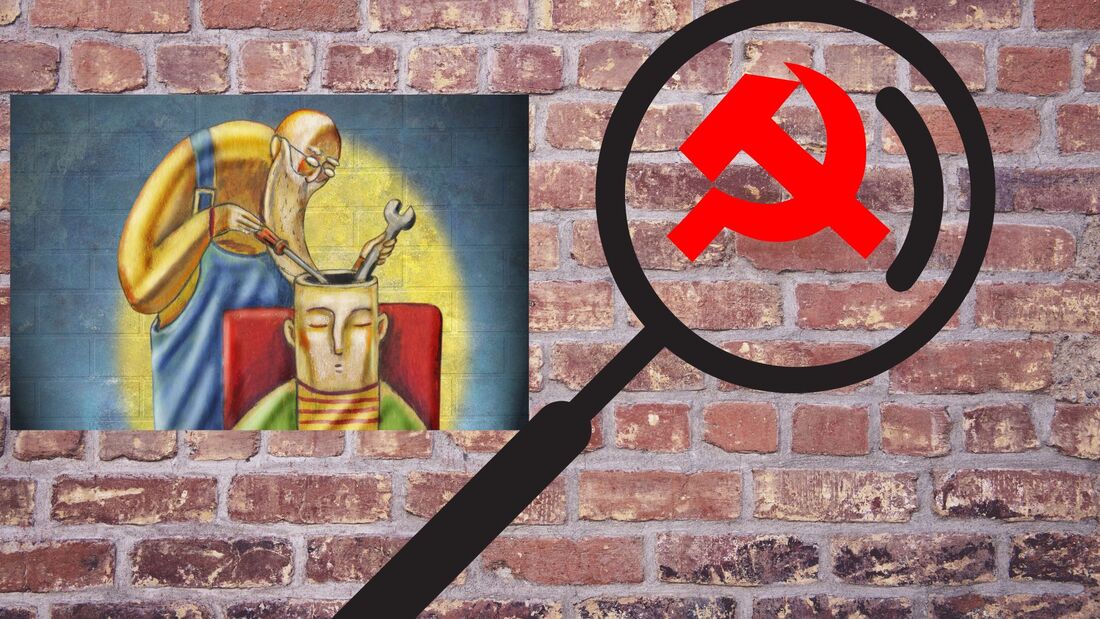

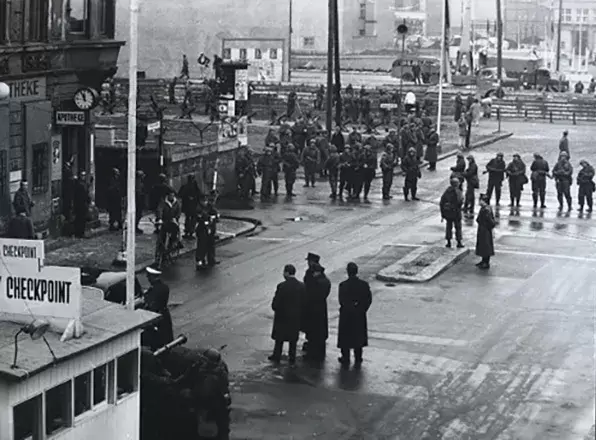




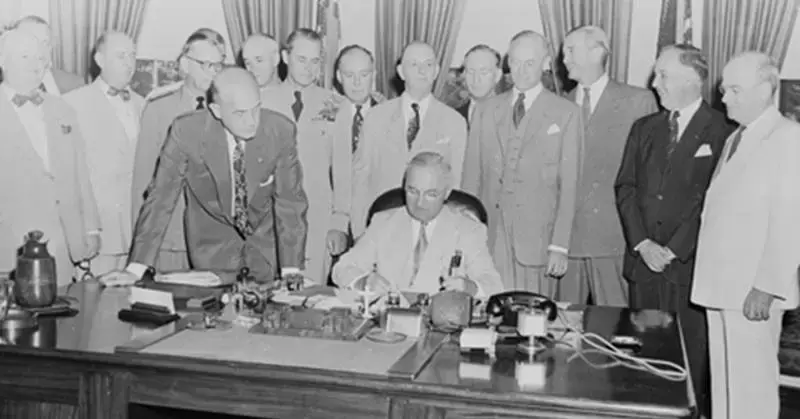
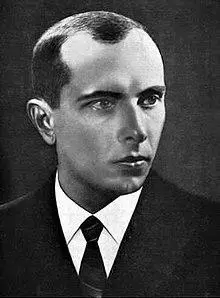





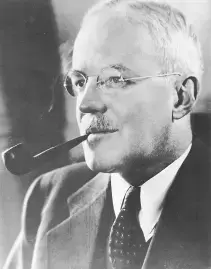


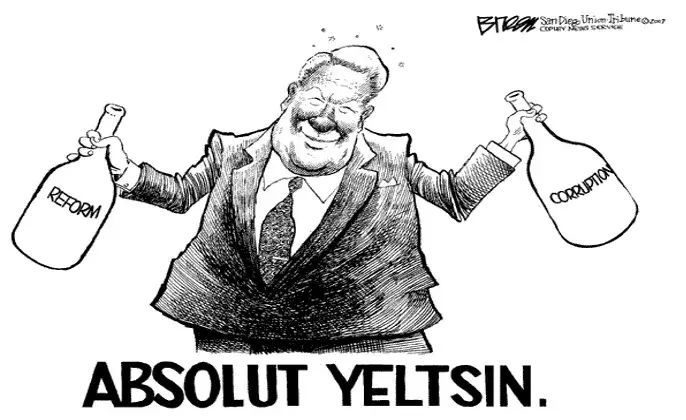




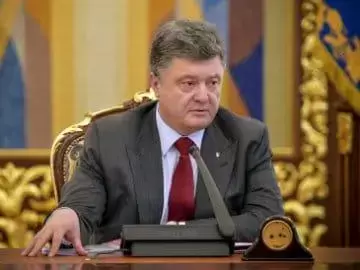
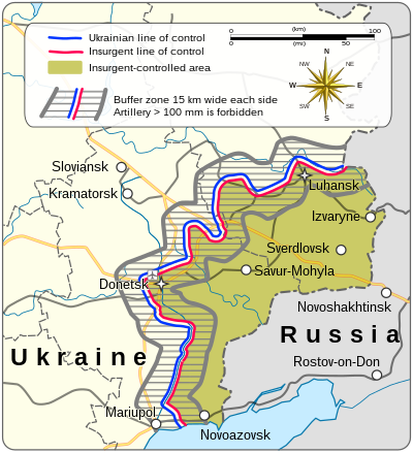

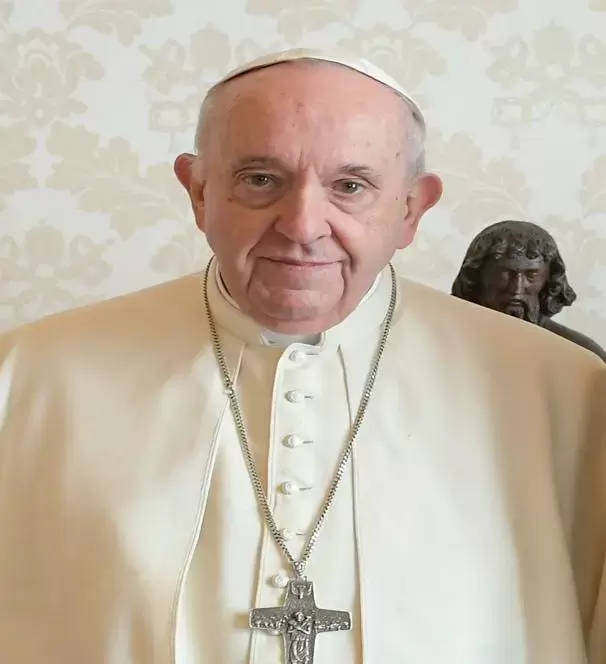



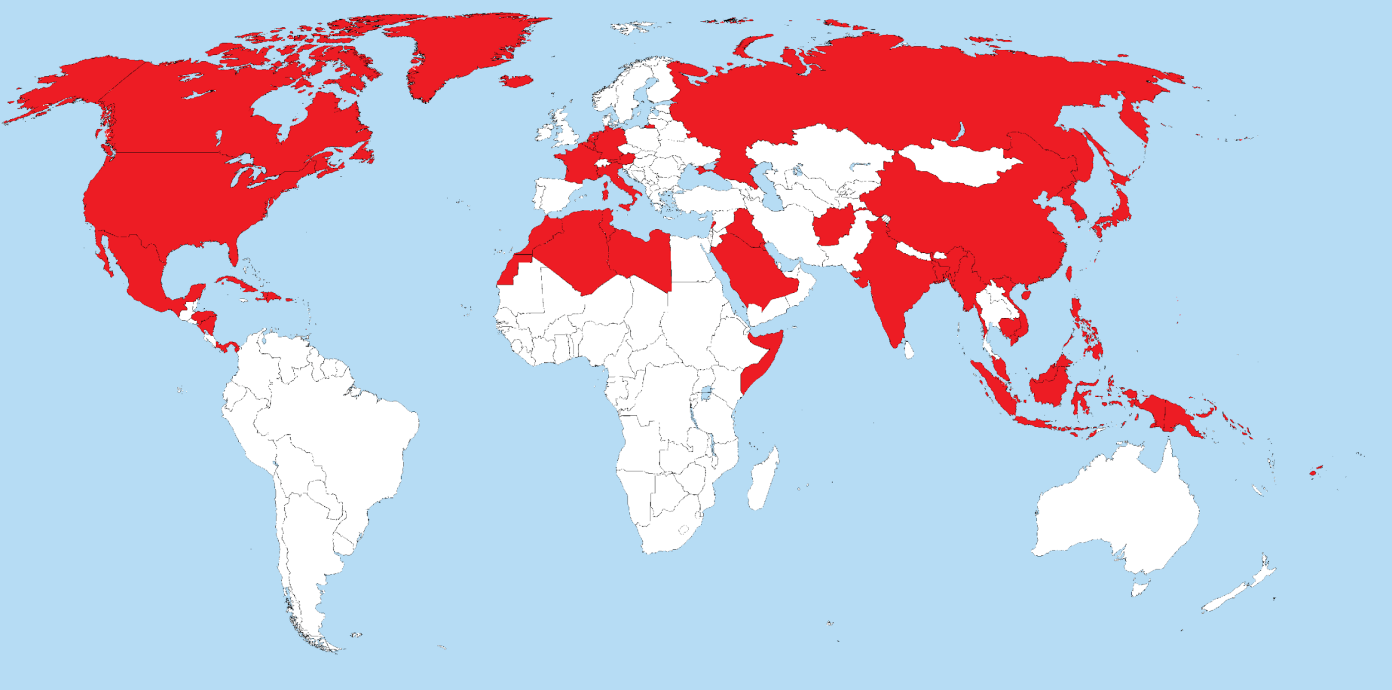


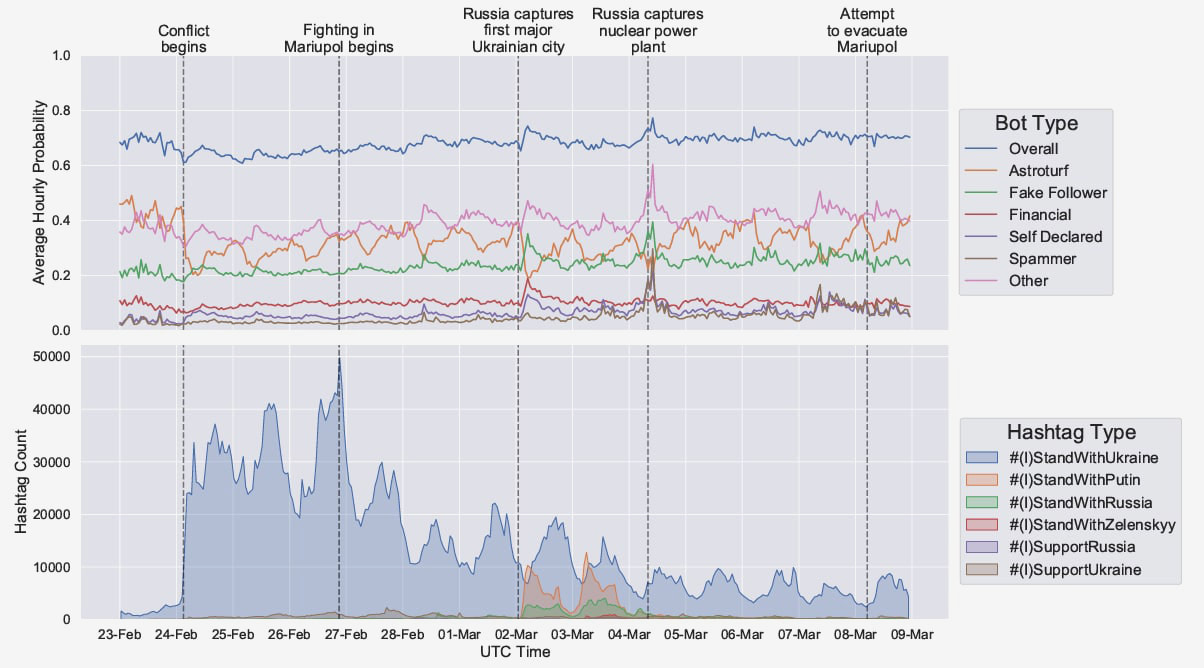
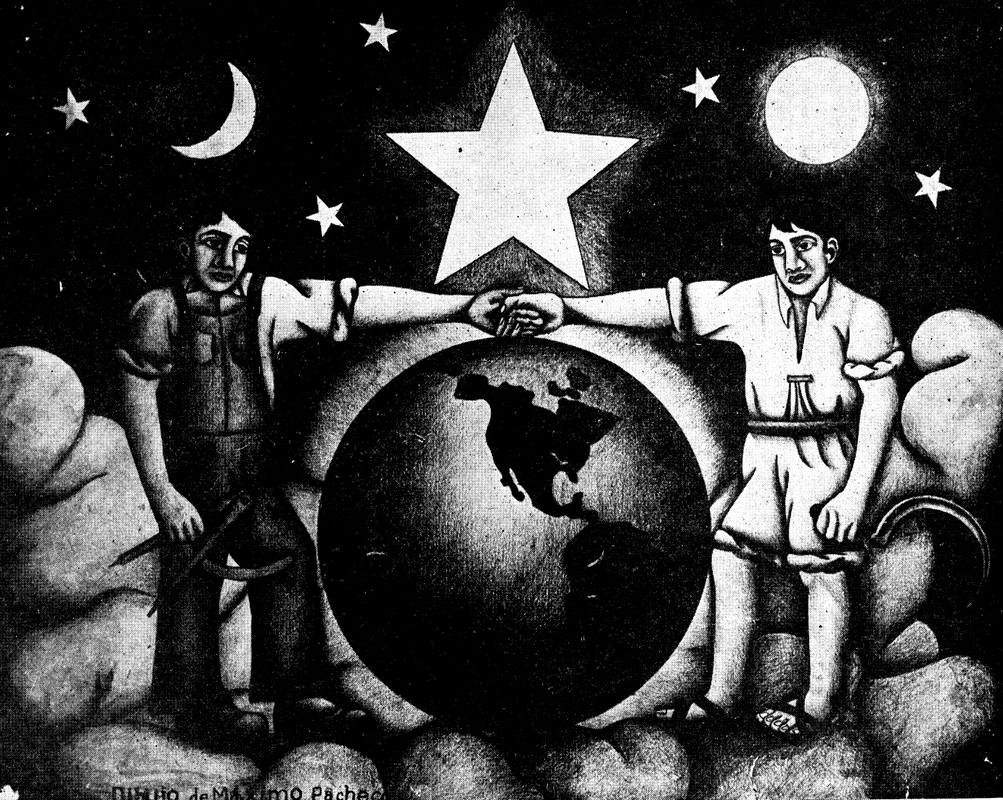



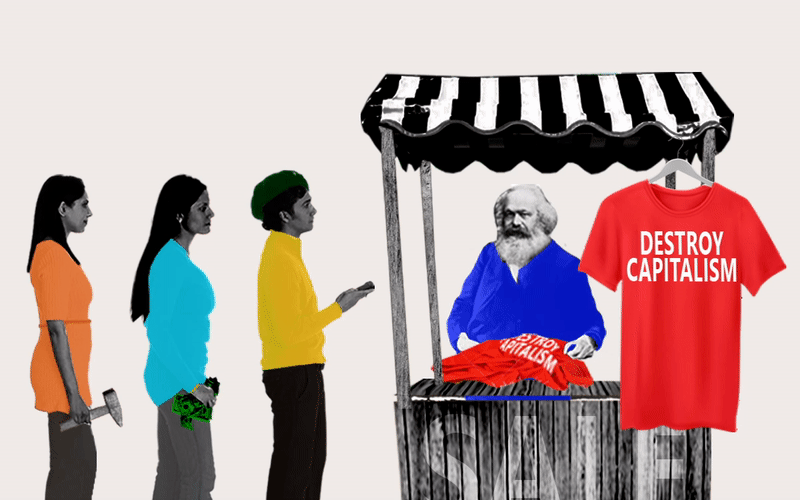
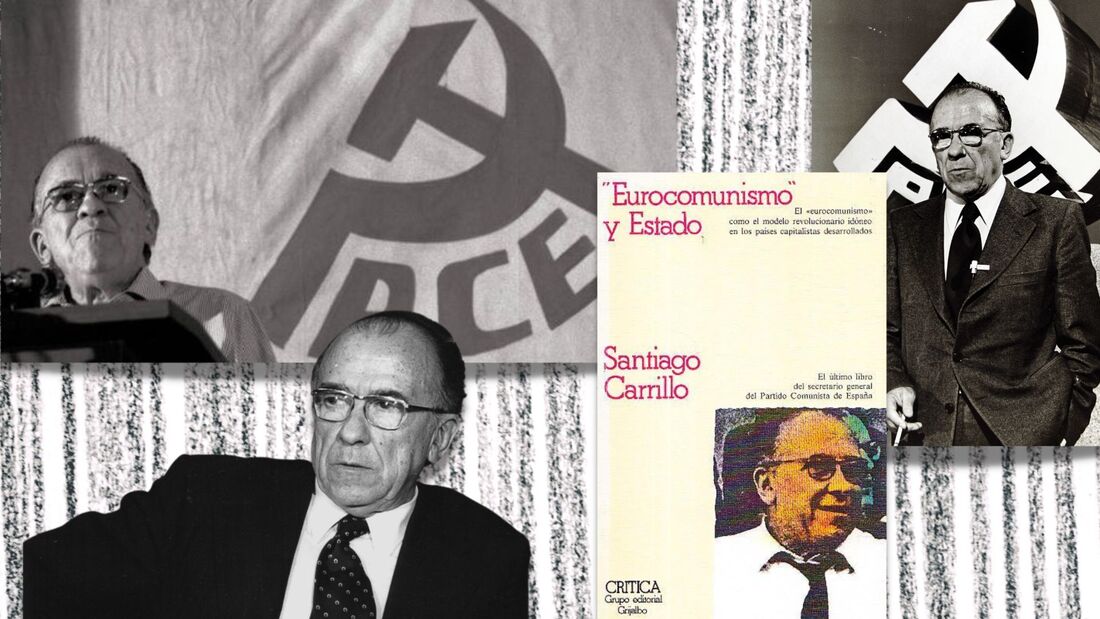

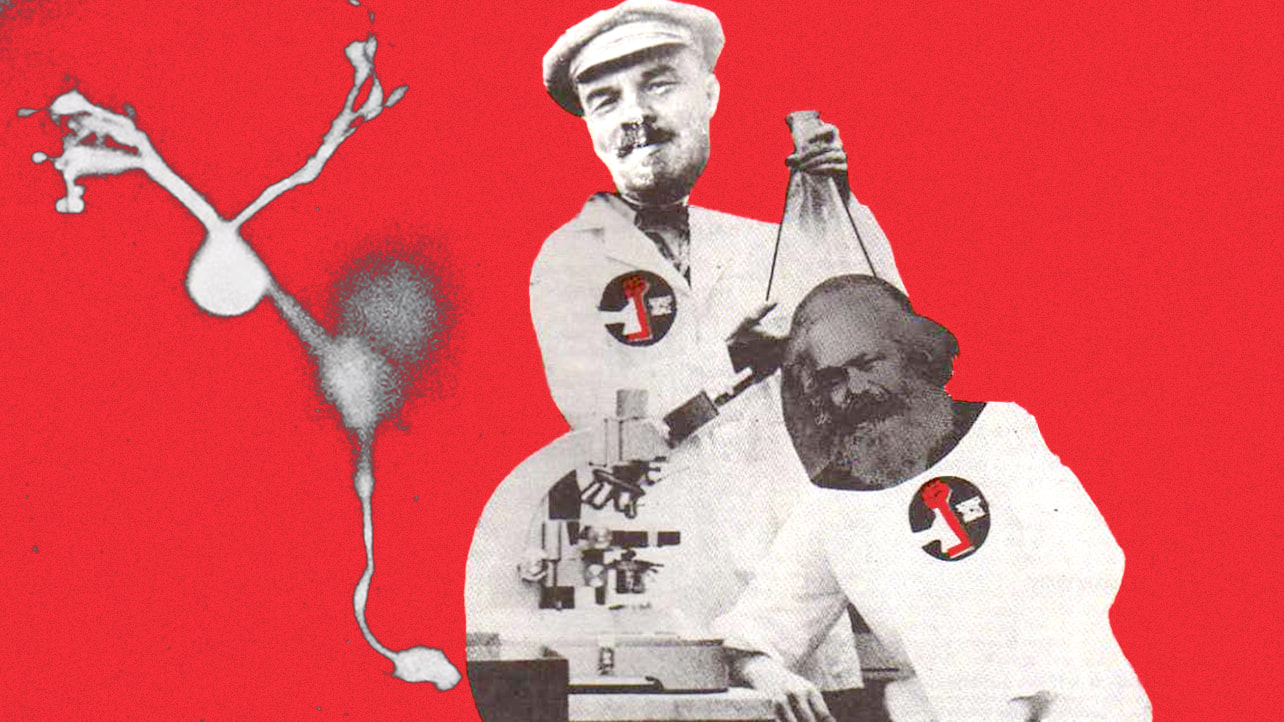



 RSS Feed
RSS Feed